All Saints' Day in Spain
Friday, October 31, 2025
While the world gears up for Halloween tonight, Spain takes a more sombre approach to the season, commemorating All Saints' Day (Día de Todos los Santos) tomorrow, on November 1st. This public holiday is a time for families to honour and remember loved ones who have passed away.
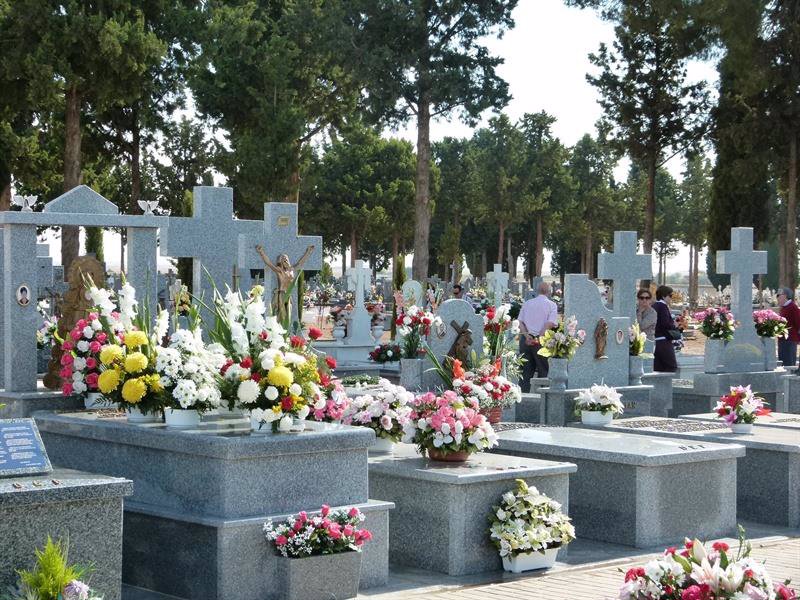
A Deeply Rooted Tradition:
The tradition of All Saints' Day is deeply ingrained in Spanish culture, with roots tracing back to the 9th century. It's a day of reflection and remembrance, observed with a blend of religious and familial customs.
How Spain Celebrates:
-
Cemetery Visits: The most prominent tradition is visiting cemeteries. Families gather to clean and decorate the graves of their loved ones with flowers, often chrysanthemums, and candles. It's a poignant scene as cemeteries come alive with colour and the flicker of candlelight.
-
Special Masses: Many attend special masses held in churches throughout the day. These services offer prayers and blessings for the departed souls.
-
Family Gatherings: While a solemn occasion, All Saints' Day is also a time for families to come together. Sharing stories and memories of those who have passed helps to keep their spirit alive.
-
Regional Variations: While the core traditions remain consistent, certain regions have unique customs. For instance, in Galicia, a traditional cake called "Huesos de Santo" (Saint's Bones) is enjoyed.
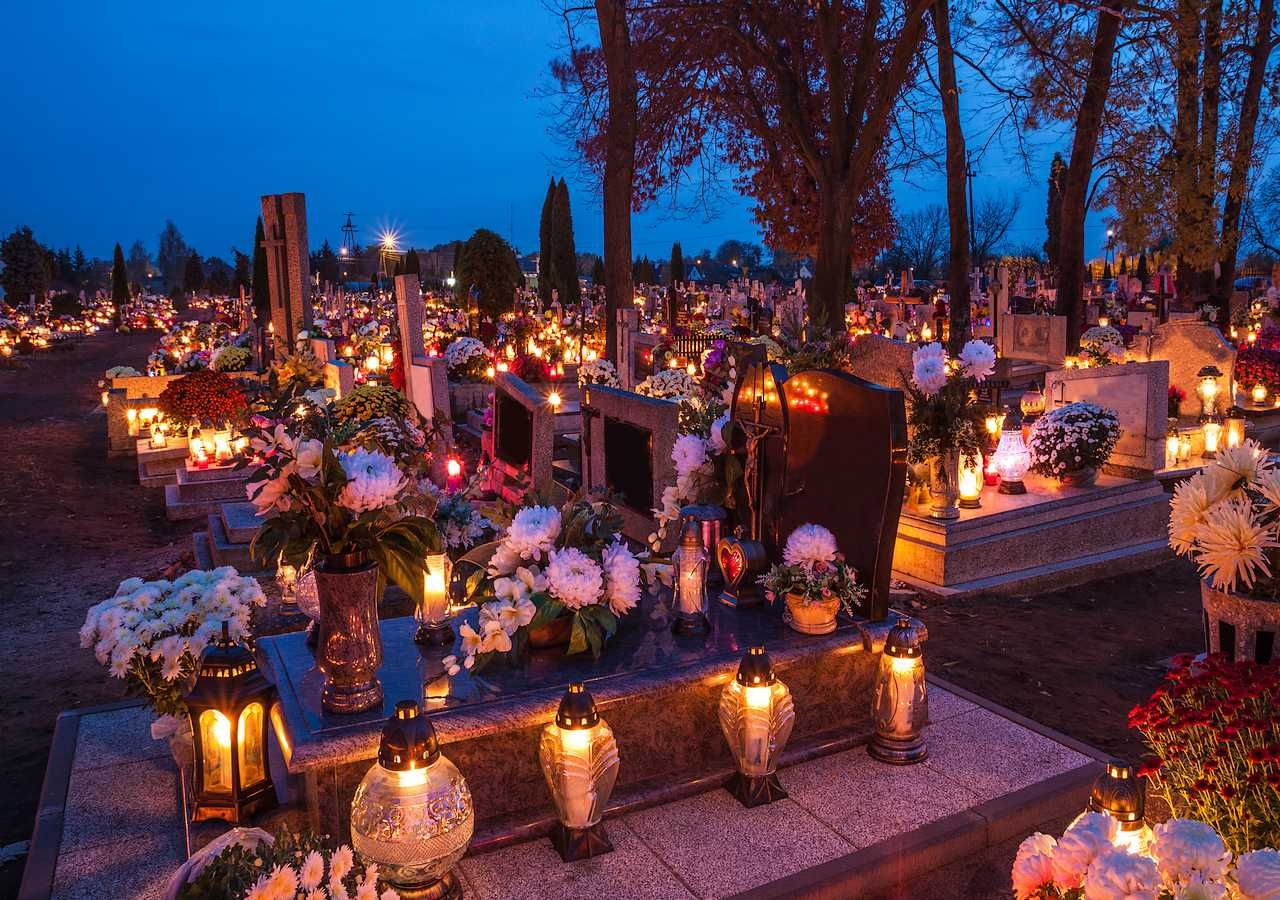
Sweet Traditions:
All Saints' Day in Spain is also marked by the consumption of specific sweets, adding a touch of sweetness to this day of remembrance. Here are some of the most popular treats:

-
Huesos de Santo: These "Saint's Bones" are perhaps the most iconic All Saints' Day treat. Made from marzipan, they are shaped to resemble bones and filled with a sweet egg yolk cream. Their name and appearance might seem a bit macabre, but they are a delicious and symbolic treat.
-
Buñuelos de Viento: These light and airy fritters are another favorite. The name translates to "wind fritters," referring to their delicate texture. They are often enjoyed dusted with sugar or cinnamon.
-
Panellets: Primarily enjoyed in Catalonia, these small marzipan balls are covered in pine nuts and are a true delight. Other variations include chocolate coatings or fillings.
-
Roasted Chestnuts: The aroma of roasting chestnuts fills the air in many Spanish towns during this time of year. Sold by street vendors, they are a warm and comforting treat enjoyed by many on All Saints' Day.
.jpeg)
A Contrast to Halloween:
While Halloween's popularity is growing in Spain, especially among younger generations, All Saints' Day holds a more profound significance for many Spaniards. It's a day that emphasizes family ties, honouring ancestors, and cherishing memories.
If you find yourself in Spain on November 1st, take a moment to observe the quiet dignity of All Saints' Day. It offers a glimpse into the heart of Spanish culture and its enduring respect for the past.
 1
Like
Published at 11:06 PM Comments (0)
1
Like
Published at 11:06 PM Comments (0)
National Day of Spain 2025: What to Expect on October 12th
Saturday, October 11, 2025
October 12th marks the Fiesta Nacional de España (National Day of Spain), also widely known as Día de la Hispanidad. It’s a day steeped in history, celebrated across the country with a vibrant mix of grand military pageantry and profound local traditions, centering on themes of civic unity and cultural heritage.
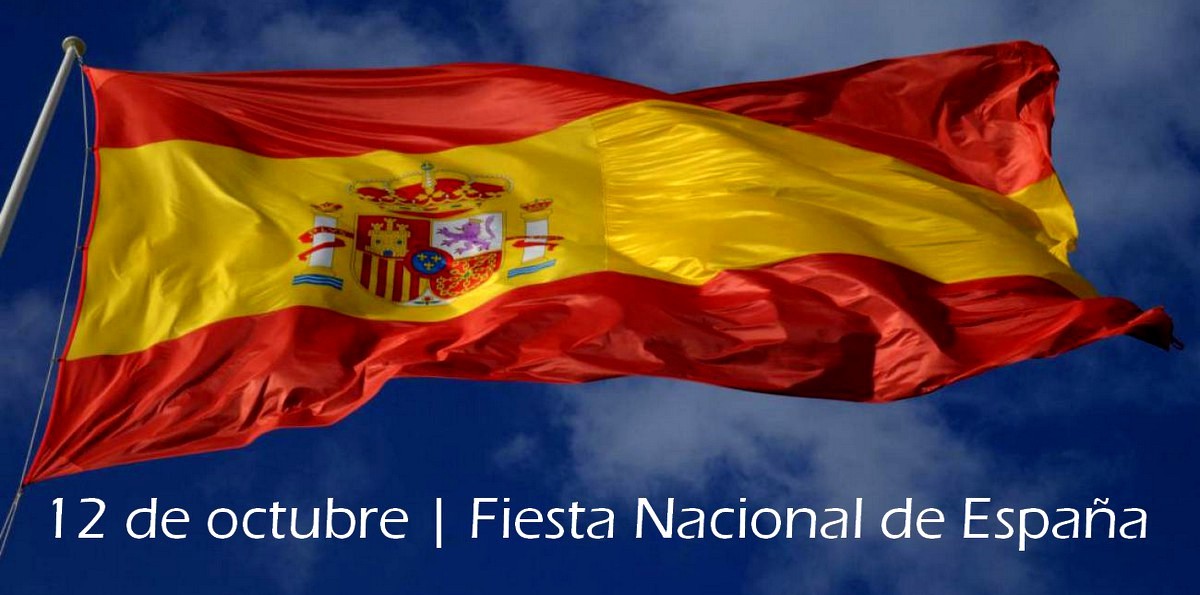
The Grand Parade in Madrid
The epicentre of the state ceremony is Madrid, where the celebration is headlined by a magnificent military display.
-
The Royal Ceremony: The King and Queen preside over the formal state act, which typically begins around 11:00 am.
-
The Parade: The main event features a tribute to the national flag, honours for those who died in service, and a large Armed Forces ground parade. Units from the Civil Guard, National Police, and Maritime Rescue also participate.
-
Aerial Display: A key highlight is the impressive Air Force flypast, featuring the famous Patrulla Águila team, which paints the sky with the colours of the Spanish flag. In 2025, the ceremony includes a special parachute jump unfurling a flag to mark the 10th anniversary of King Felipe VI’s proclamation.
A Ten-Day Celebration in the Capital
For 2025, Madrid extends the festivities into a ten-day city program, running from October 3rd to the 12th. With Argentina designated as the guest country, the city hosts over 150 free events in flagship spots like Plaza Mayor and Puerta del Sol. Visitors can enjoy a rich offering of music, theatre, folklore, visual arts, and literature, transforming the capital into a hub of Spanish and Hispanic culture.

A National Public Holiday (And What That Means for Your Weekend)
The National Day of Spain is an official nationwide bank holiday. As such, banks, schools, and most offices close, and public services typically run on reduced schedules.
In 2025, since October 12th falls on a Sunday, whether the following Monday, October 13th, is observed as a bank holiday depends on the regional government. For this year, only five autonomous communities have elected to take the Monday off: Andalusia, Aragón, Asturias, Castilla y León, and Extremadura. If you are travelling or living outside these regions, expect normal working hours to resume on Monday.
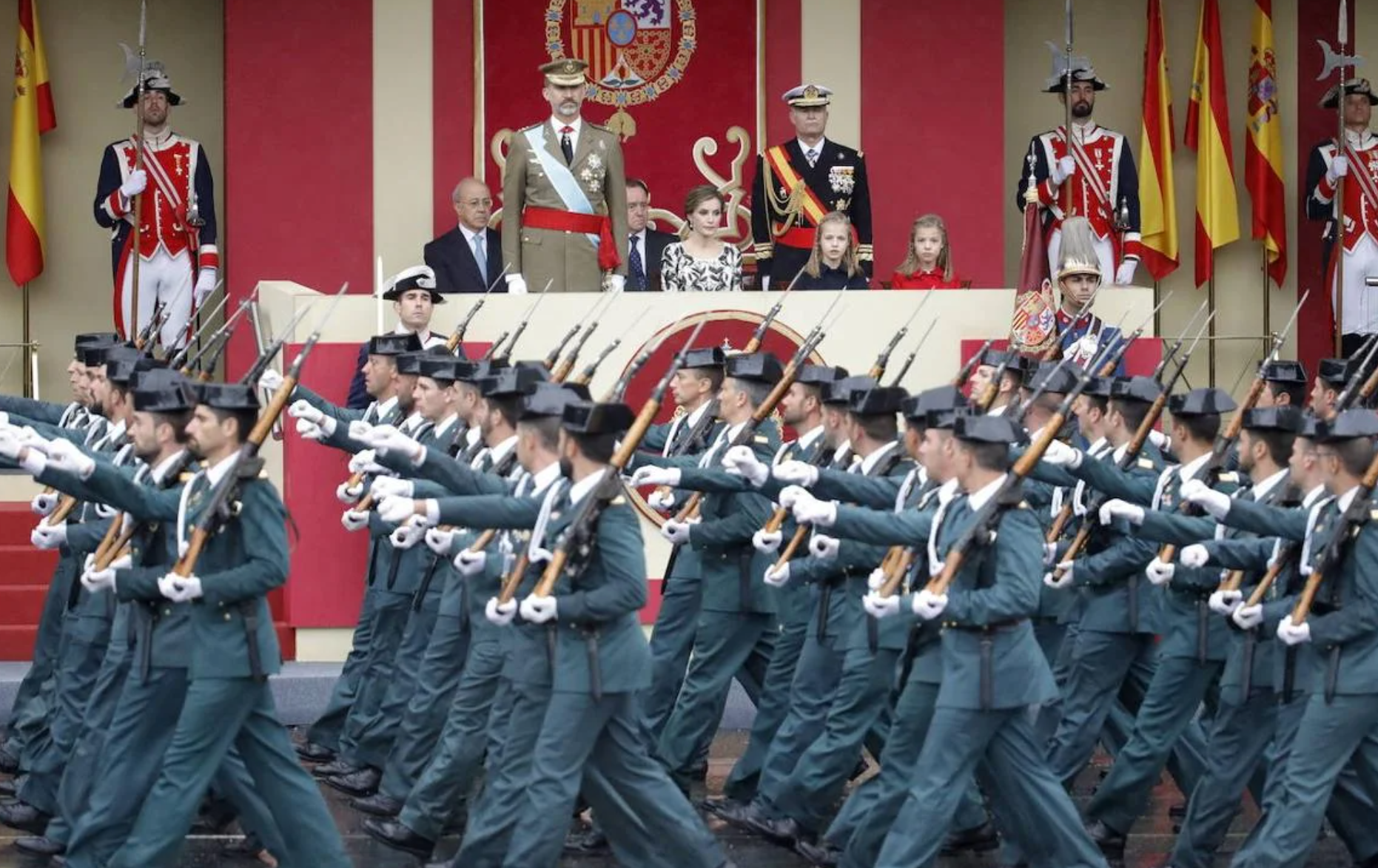
Regional and Cultural Dimensions
While the official state ceremony dominates Madrid, the day carries different meanings and traditions across Spain:
-
Zaragoza and Fiestas del Pilar: In Zaragoza, October 12th is deeply tied to the Fiestas del Pilar, honouring the patron saint of the city and the day's religious holiday. The city comes alive with the celebrated floral offering, concerts, and family gatherings that turn the celebration into a major regional festival.
-
Regional Variation: For many, the day is a civic holiday celebrating shared institutions and the broader Hispanic world. However, in regions like Catalonia and the Basque Country, observance is often low-key, with some communities opting for cultural programs that emphasise local identity or even pro-independence demonstrations as a counterpoint to the centralist symbolism.
Whether you find yourself in the heart of Madrid, witnessing the military might, or participating in the floral offerings of Zaragoza, Spain's National Day offers a profound glimpse into the country's complex history and vibrant cultural identity.
 3
Like
Published at 10:56 AM Comments (0)
3
Like
Published at 10:56 AM Comments (0)
Gastronomic Festivals This Summer in Spain
Saturday, July 12, 2025
If Spain has something it can boast about, it is eating well. In each of the autonomous communities, you can celebrate the products of the land and the sea through typical regional recipes either in markets or celebrations where local traditions are kept alive.
Many of these celebrations take place during the summer months, so if you are on holiday or just happen to have a day off, everyone is invited to these wonderful gastronomic festivals, so take note and plan for the next one...
1 International Garlic Fair (Las Pedroñeras)
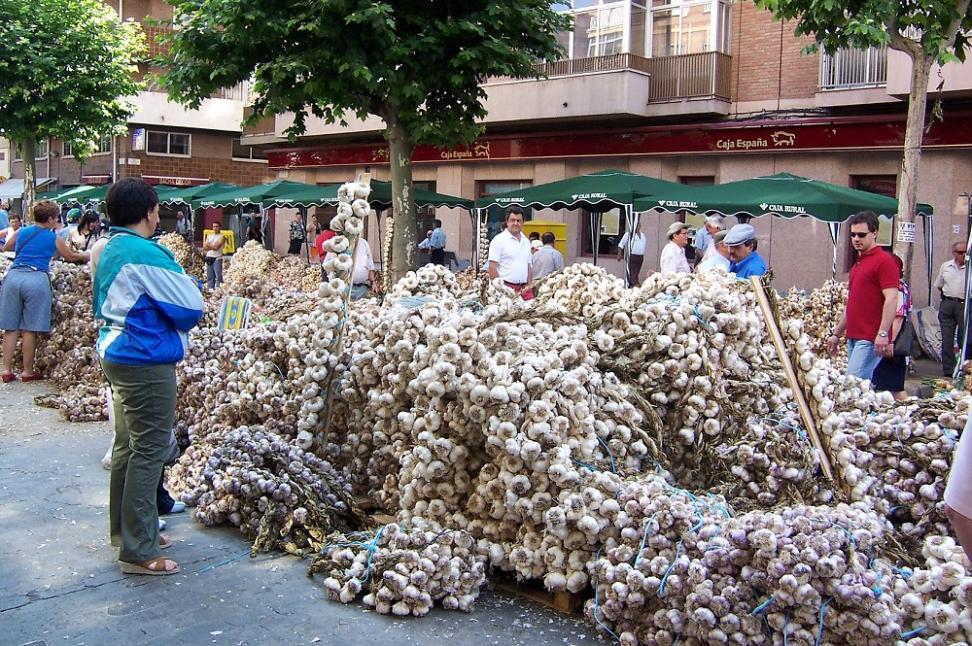
Every year, at the end of July, the International Garlic Fair is held in Las Pedroñeras, in the province of Cuenca (Castilla-La Mancha). This town, considered by many to be the garlic capital of the world, organises a weekend of festivities centred around garlic, one of the typical products of this land.
Activities such as a gastronomic contest, a parade of vintage tractors or a tapas route are on the agenda. The International Garlic Fair, which has been held for more than forty years, takes place at the Las Pedroñeras Fairgrounds for Exhibitions.
2 Albariño Festival (Cambados)

In the province of Pontevedra, Cambados is one of those wonderful Galician towns that is always recommended to visit, but it is also one of the cradles of wine in the region. Every first Sunday in August the Albariño Festival is celebrated in Cambados, in which tastings, tapas and seafood are always the protagonists, and in which you can stroll from booth to booth savouring the local gastronomic wonders. The town is known as the capital of Albariño in the world and its festival is classified as one of International Tourist Interest.
3 Gazpacho Festival (Alfarnatejo)
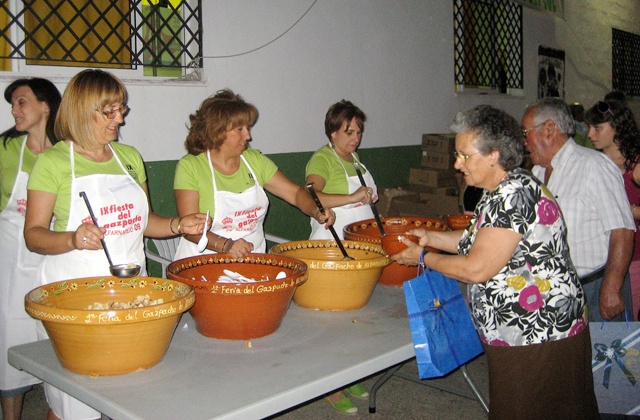
Among the typical recipes of Spain in summer, gazpacho has to be the most recognisable, so it is not surprising that it has a gastronomic festival of its own. The Fiesta del Gazpacho is held in the Malaga municipality of Alfarnatejo.
Declared a Provincial Tourist Singularity Festival, the Gazpacho Festival takes place at the beginning of August. Nestled in the heart of the Axarquía region, it is a perfect occasion to discover one of the most beautiful landscapes in Andalusia.
4 Octopus festivals (Carballiño)
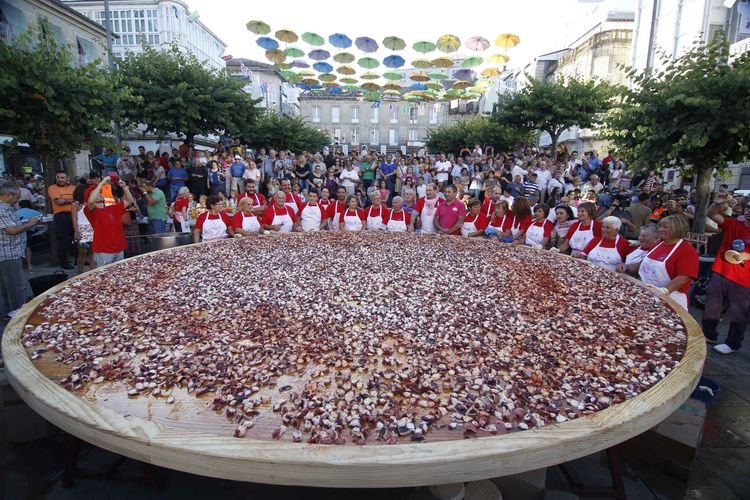
The second week of August in O Carballiño, in the Galician province of Ourense, the Octopus Festival (Festa do Polbo) is organised, one of the most emblematic of the autonomous community. Large copper cauldrons are prepared to cook in the traditional manner this delicacy taken from the waters of Galicia. It is a day when local white wine, traditional Empanadas and Cachelos will definitely be on the menu. It is another of the gastronomic festivals of Galicia that was declared of International Tourist Interest.
5 Day of the Marmita (Laredo)
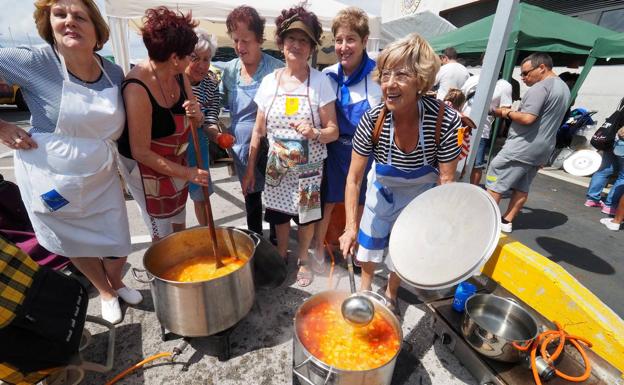
The typical metal pot of the Cantabrian lands called "Marmita" gives its name to the next gastronomic festival that must be savoured. The Day of the Marmita in Laredo, also known as Dia del Puerto celebrates cooked Bonito- Tuna steak. This gastronomic festival takes place every August 16, coinciding with the feast of San Roque, who is the patron Saint of the town.
The teams meet at the port to cook in these pots-cum-cauldrons and compete to see who can cook the best Bonito del Norte. Yet another gastronomic festival that must be noted.
6 Clam Festival (Lane)
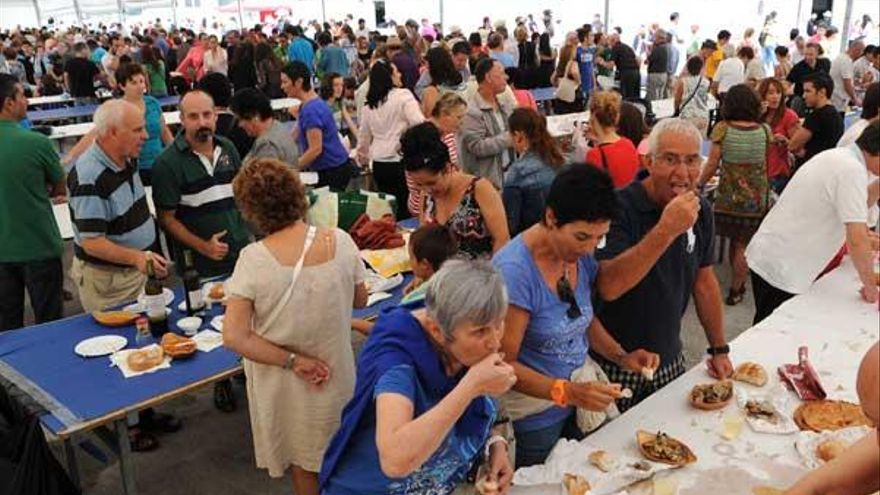
Galicia is an explosion of parties in summer. So much so that if you move around the community in August you will see that in most municipalities one Patron Saints' day or another is being celebrated. Attached to these celebrations it is common to discover a gastronomic festival to aid in the celebration.
In mid-August the Clam Festival takes place in Carril, in Vilagarcía de Arousa (Pontevedra), declared a Festival of Tourist Interest in Galicia. Clam tastings and contests are some of the typical activities during this festival in which neither traditional music nor Albariño wine is lacking.
7 Natural Cider Festival (Gijón)
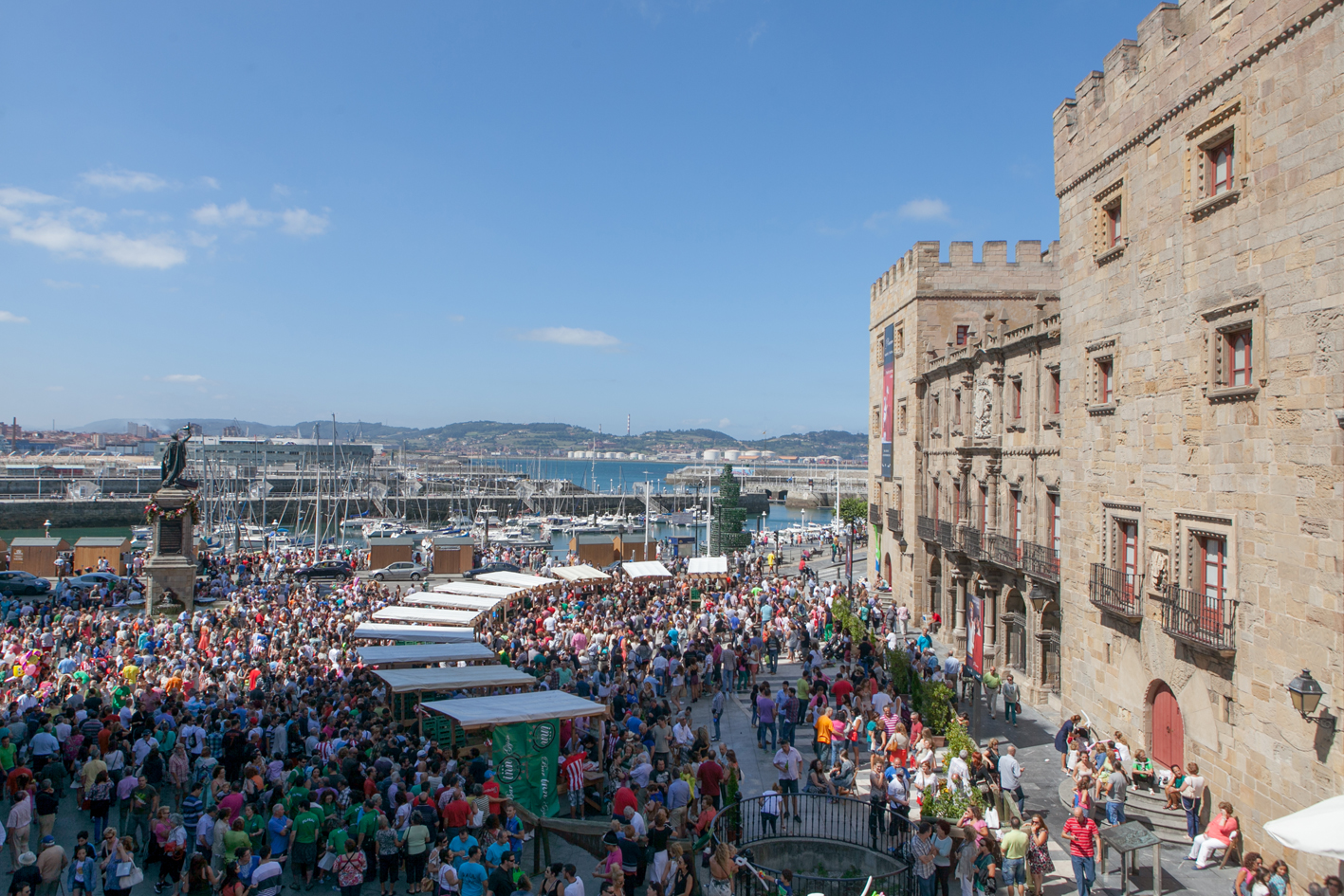
At the end of August, Asturias celebrates one of its most traditional drinks: cider. Thus, in Gijón the Natural Cider Festival takes place. It was declared an event of National Tourist Interest where more than 30,000 litres are distributed. The activities are very varied ranging from pouring contests to urban pilgrimages, apple and cider markets as well as visits to nearby wineries.
The Natural Cider Festival is the most emblematic of the Asturian cider festivals, since it has been celebrated since the sixties, and constitutes one of the best moments to get to know the beautiful city of Gijón.
 2
Like
Published at 12:06 AM Comments (0)
2
Like
Published at 12:06 AM Comments (0)
Semana Santa 2025: A Guide to Spain's Holy Week Celebrations
Friday, March 28, 2025
As the spring of 2025 approaches, millions of people across Spain and around the world are already looking forward to one of the most significant religious and cultural events in the Christian calendar: Semana Santa, or Holy Week. This annual commemoration of the passion, death, and resurrection of Jesus Christ is a time of profound spiritual reflection, vibrant traditions, and spectacular processions that draw visitors from far and wide. In this comprehensive guide, we'll explore everything you need to know about Semana Santa 2025, from its dates and significance to regional celebrations and practical information for travellers.
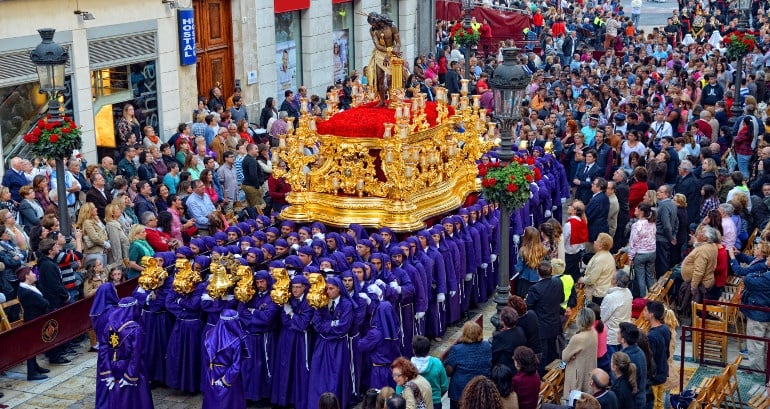
The Dates of Semana Santa 2025
Semana Santa is a movable feast, meaning its dates change yearly based on the lunar calendar. The celebration always falls on the first Sunday after the first full moon following the spring equinox. For 2025, the key dates are as follows:
Palm Sunday (Domingo de Ramos): 13th April
Holy Monday (Lunes Santo): 14th April
Holy Tuesday (Martes Santo): 15th April
Holy Wednesday (Miércoles Santo): 16th April
Maundy Thursday (Jueves Santo): 17th April
Good Friday (Viernes Santo): 18th April
Holy Saturday (Sábado Santo): 19th April
Easter Sunday (Domingo de Resurrección): 20th April
It's worth noting that the liturgical season begins earlier, with Ash Wednesday falling on 5th March 2025. Additionally, the feast of Corpus Christi, which is closely associated with the Easter season, will be celebrated on 19th June 2025.
The Significance of Semana Santa
Semana Santa is not merely a religious observance; it's a profound cultural experience that reflects Spain's deep-rooted Catholic heritage. Each day of Holy Week carries its own significance, commemorating different events in the final days of Jesus' life:
Palm Sunday: Marks Jesus' triumphal entry into Jerusalem.
Holy Monday to Holy Wednesday: Days of preparation and reflection.
Maundy Thursday: Commemorates the Last Supper and the washing of the disciples' feet.
Good Friday: Remembers Jesus' crucifixion and death.
Holy Saturday: A day of silence and mourning.
Easter Sunday: Celebrates the resurrection of Jesus Christ.
Throughout the week, cities and towns across Spain come alive with processions, religious services, and cultural events that bring these biblical stories to life in vivid and often emotional displays of faith and tradition.
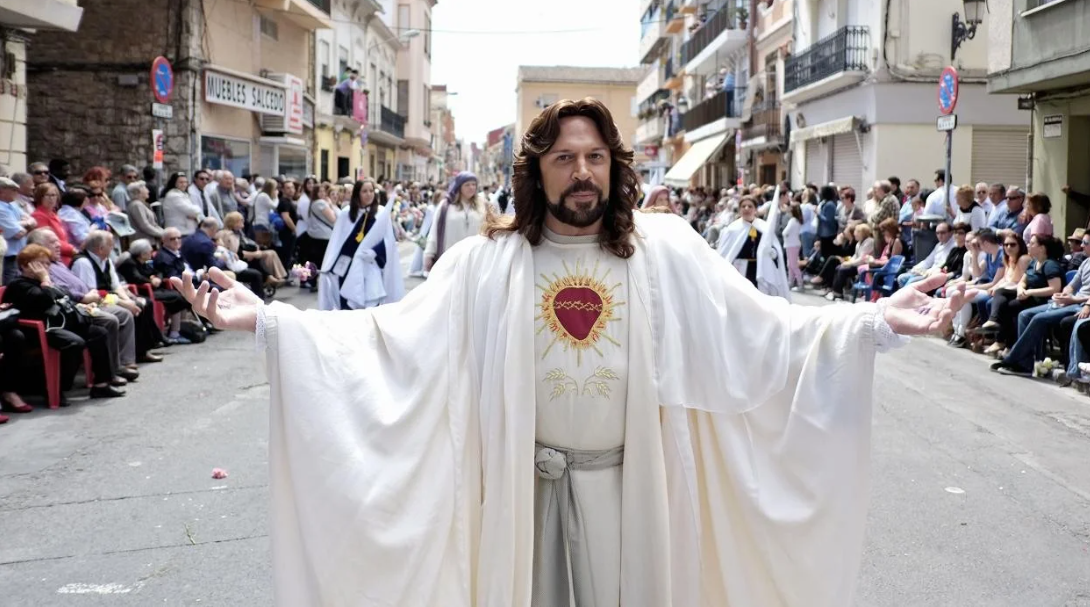
Regional Celebrations and Traditions
While Semana Santa is observed throughout Spain, the character and intensity of celebrations can vary significantly from region to region. Some of the most renowned celebrations include:
Seville: Known for its elaborate processions featuring ornate floats (pasos) carrying religious statues, accompanied by nazarenos in distinctive pointed hoods.
Málaga: Famous for its throne-like floats and the participation of legionnaires in some processions.
Valladolid: Noted for its solemn processions and remarkable religious sculptures.
Salamanca: Combines religious devotion with the stunning backdrop of its historic university town.
Granada: Offers a unique blend of Andalusian fervour and the majestic setting of the Alhambra.
Each of these cities, and indeed many others across Spain, will have their own detailed programmes of events and processions for Semana Santa 2025. Visitors are advised to check local tourism websites or contact tourist information offices for specific schedules closer to the date.
Public Holidays and Work Calendar
Understanding the public holiday schedule during Semana Santa is crucial for both residents and visitors. While practices can vary between autonomous communities, generally, the following days are observed as public holidays:
Maundy Thursday (17th April 2025)
Good Friday (18th April 2025)
Some regions also observe Easter Monday (21st April 2025) as a public holiday. It's important to note that there are variations:
La Rioja, Navarra, and the Basque Country celebrate three festive days: Maundy Thursday, Good Friday, and Easter Monday.
In the Valencian Community and Catalonia, Maundy Thursday is a working day, but Easter Monday is a holiday.
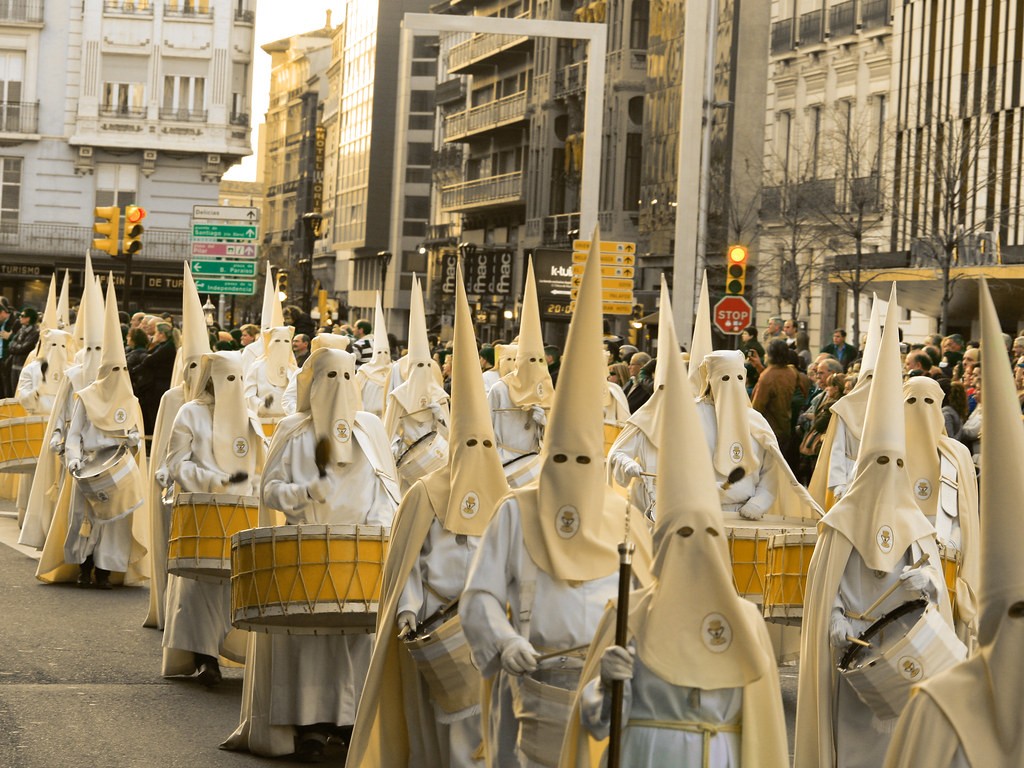
Here's a brief overview of the holiday calendar for some major regions:
Madrid, Andalusia, Aragon, Asturias, Balearic Islands, Canary Islands, Cantabria, Castilla-La Mancha, Castilla y León, Extremadura, Galicia, Murcia, Ceuta, and Melilla:
17th April (Maundy Thursday)
18th April (Good Friday)
Catalonia and Valencian Community:
18th April (Good Friday)
21st April (Easter Monday)
La Rioja, Navarra, and Basque Country:
17th April (Maundy Thursday)
18th April (Good Friday)
21st April (Easter Monday)
Travellers should be aware that many businesses, including some restaurants and shops, may have reduced hours or be closed entirely during these days, especially in smaller towns and cities.
Planning Your Semana Santa Experience
If you're considering visiting Spain for Semana Santa 2025, here are some tips to enhance your experience:
Book Early: Accommodation in popular destinations like Seville or Málaga can fill up months in advance. Start planning your trip as early as possible.
Choose Your Location: Decide whether you want to experience the grand spectacles of cities like Seville or the more intimate celebrations in smaller towns.
Learn the Schedule: Familiarise yourself with the procession routes and times in your chosen destination. Some of the most impressive processions occur late at night or in the early hours of the morning.
Dress Appropriately: While you don't need to dress formally, respectful attire is appreciated, especially when attending religious services.
Be Prepared for Crowds: Popular processions can draw enormous crowds. Arrive early to secure a good viewing spot and be patient.
Taste the Traditions: Semana Santa has its own culinary traditions. Try local specialties like torrijas (a type of sweet French toast) or potaje de vigilia (a hearty vegetable and chickpea stew).
Respect Local Customs: Many participants consider this a deeply religious event. Respect the solemnity of certain moments.
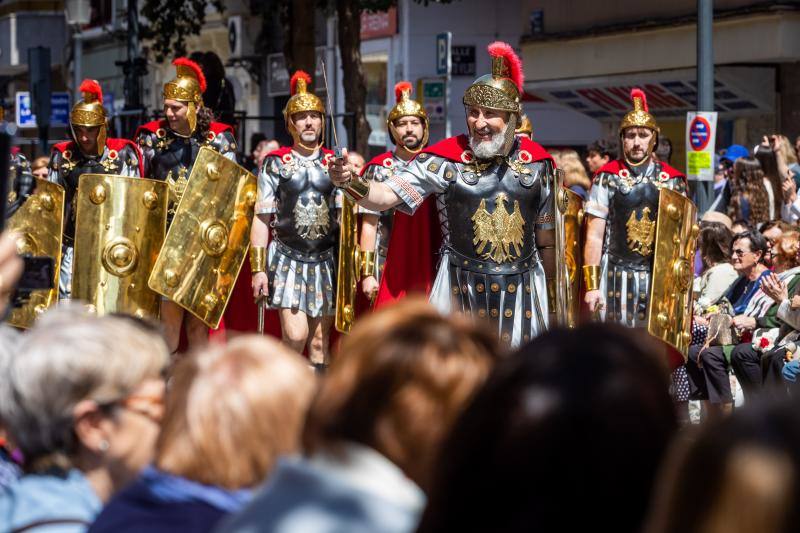
Weather Considerations
The weather during Semana Santa can vary significantly depending on the region. While spring is generally mild in Spain, it's always wise to check the forecast for your specific destination. Coastal areas like Málaga might offer warmer temperatures, while inland cities like Madrid or Salamanca could still be cool, especially in the evenings.
Rain is always a possibility during this time of year, which can affect outdoor processions. Many cities have contingency plans for wet weather, but it's a good idea to bring a light raincoat or umbrella just in case.
Embracing the Spirit of Semana Santa
Whether you're a devout pilgrim or a curious traveller, Semana Santa offers a unique opportunity to immerse yourself in Spanish culture and tradition. The week-long celebration is a feast for the senses, with the scent of incense filling the air, the sound of solemn music and the rhythmic steps of processions echoing through ancient streets, and the sight of intricate religious artworks and passionate displays of faith.
For many Spaniards, Semana Santa is also a time for family gatherings and shared meals. It's a period when age-old traditions are passed down through generations, ensuring that this rich cultural heritage continues to thrive in the modern world.
As you plan for Semana Santa 2025, remember that beyond the spectacle and the crowds, this is a time of reflection and renewal for many. By approaching the celebrations with respect and an open mind, you'll be able to appreciate the depth and beauty of this extraordinary Spanish tradition.
Whether you find yourself in the grand plazas of Seville, the winding streets of Toledo, or the sun-drenched coast of Málaga, Semana Santa 2025 promises to be an unforgettable experience. It's a time when Spain's rich history, fervent faith, and vibrant culture come together in a truly unique celebration that continues to captivate both locals and visitors alike.
 2
Like
Published at 9:03 AM Comments (0)
2
Like
Published at 9:03 AM Comments (0)
Saint Patrick's Day in Sunny Spain!
Wednesday, March 12, 2025
Saint Patrick's Day, celebrated globally on 17th March, is an annual salute to Ireland’s esteemed patron saint. Traditionally rooted in Irish culture, this lively festival has seamlessly integrated into the celebrations of many countries, and Spain is no exception. From bustling metropolises to scenic coastal towns, Spain offers a unique and exciting way to enjoy Saint Patrick’s Day, replete with Irish culture, music, and of course, an abundance of Guinness. Here’s everything you need to know about joining the festivities in Spain.
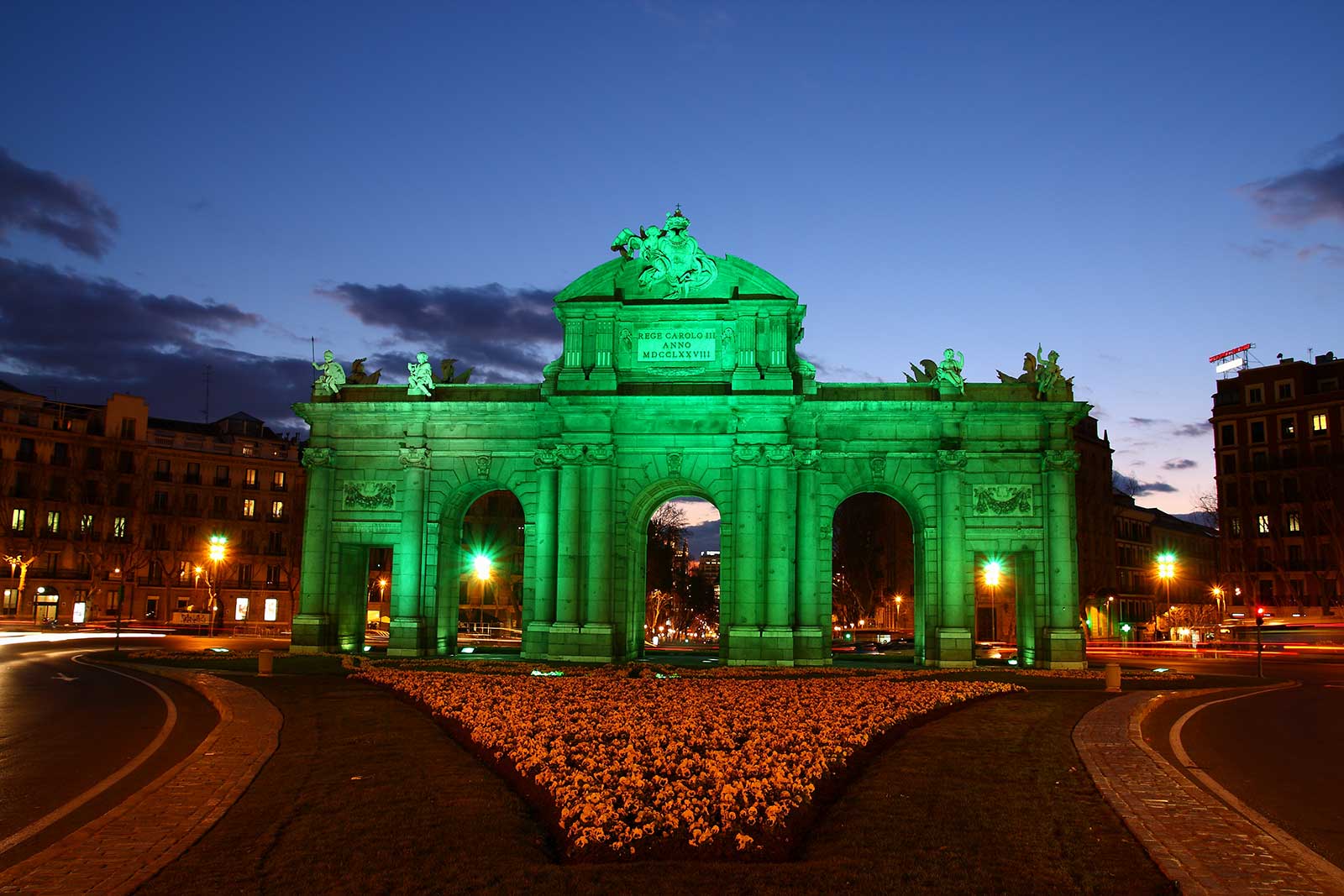
Prime Locations to Celebrate Saint Patrick’s Day in Spain
Due to a flourishing Irish expatriate community and a dynamic tourist scene, Spain provides numerous hotspots perfect for Saint Patrick's Day celebrations. Below are some of the top destinations within Spain where you can partake in the Irish-themed merriment:
Madrid
The capital city of Madrid brims with energy as it gears up for Saint Patrick's Day. From 10th to 17th March, Tourism Ireland schedules a lively array of events showcasing Irish culture and its Celtic heritage intertwined with the Spanish atmosphere. A cornerstone event is the St. Patrick’s Parade on 15th March, featuring a vibrant procession through the city’s centre, often starring over 600 pipers from all corners of Spain.
Madrid is also home to numerous well-loved Irish pubs such as O’Connell St., The Irish Rover, and James Joyce Irish Pub. These venues are famous for their traditional Irish music, festive ambience, and a wide selection of Irish fare.
Barcelona
Barcelona's Gothic Quarter and La Rambla become festive hubs during Saint Patrick's Day. Iconic Irish bars like The Wild Rover, Flaherty’s, and George Payne host major celebrations with live bands, dancing, and enticing drink specials. The city's characteristic vibrancy coupled with Irish festivities makes it an unforgettable destination for the holiday.
Benidorm
Famed for attracting British and Irish tourists, Benidorm throws one of the most elaborate Saint Patrick's Day parties in Spain. The main strip in the Old Town transforms into a green spectacle, with street parties, live performances, and special events dotting the day. This lively coastal town, fondly referred to as "Paddy's Day Benidorm," sees an ocean of celebrators enjoying their pints of Guinness by the sea.
Alicante
Alicante, renowned for its buzzing nightlife and beautiful beaches, also shines during Saint Patrick's Day. Irish pubs such as O’Hara’s and The Bog Road come alive with traditional Irish music and dancing, creating a spectacular festive atmosphere, especially around the Explanada de España and its neighbouring areas.
Málaga and the Costa del Sol
The sunny southern coast of Costa del Sol, with locations like Torremolinos and Marbella, is another Saint Patrick’s Day celebration hotspot. Expect parades, live music, and Irish-themed parties populating various pubs and beach bars, set against the backdrop of picturesque Spanish scenery.
Tenerife and the Canary Islands
For a tropical twist, the Canary Islands with their warm climates offer a picturesque setting for Saint Patrick’s Day. Areas like Playa de las Américas in Tenerife and Puerto del Carmen in Lanzarote host large-scale festivities, incorporating Irish music, dance, and entertainment into their holiday spirit.
For a comprehensive guide to Saint Patrick’s Day events around Spain, check out resources from the Irish Embassy in Spain for details on concerts, dances, lunches, and Mass.
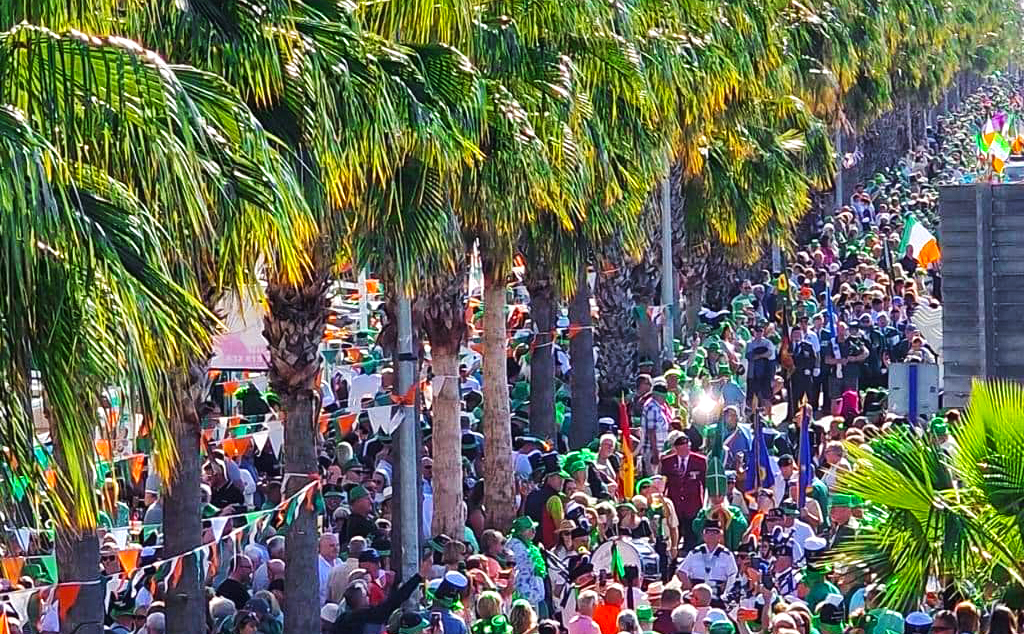
What to Expect: Traditions and Festivities
Expect an overwhelming sight of green during Saint Patrick's Day in Spain. Landmarks, pubs, and even fountains may be illuminated in vibrant green lights. Revelers often dress in shamrock-themed attire, enhancing the celebratory mood.
Traditional Irish folk music and dancing are at the heart of the festivities. The sounds of fiddles, jigs, and lively tunes set a joyous tone, filling the air with infectious energy.
No Saint Patrick's Day celebration is complete without its iconic beverages. Most Irish pubs stock up on Guinness and Jameson, offering attractive deals on pints and Irish-inspired cocktails.
In various tourist hotspots, you might witness lively parades and open-air performances, bringing a slice of Ireland right to Spain.
Tips for Enjoying Saint Patrick’s Day in Spain
To make the most of your Saint Patrick's Day celebration in Spain, consider these helpful tips:
- Arrive Early: Irish pubs tend to fill up quickly, so arriving early can secure you a favourable spot to enjoy the day’s events.
- Dress in Green: Embrace the spirit of the holiday by donning green attire, fitting right in with the celebrative crowd.
- Check Local Events: Keep an eye out for special promotions and events via social media and local announcements, as many bars and restaurants host unique offerings.
- Try Irish Food: Delight in Irish culinary classics such as Irish stew, fish and chips, and soda bread, which many pubs serve for the occasion.
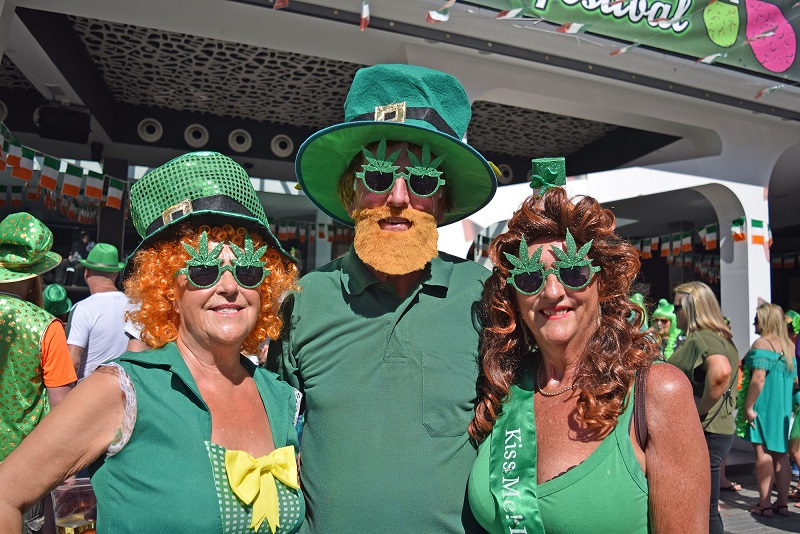
Whether you are an Irish expatriate, a tourist, or merely an enthusiast of Irish culture, celebrating Saint Patrick’s Day in Spain in 2025 promises an extraordinary experience. With its sunny climate, enchanting music, and festive spirit, Spain provides a distinctive and memorable setting for this renowned Irish holiday.
So, this Saint Patrick’s Day, why not venture out and savour a fusion of Irish tradition and Spanish charm? Sláinte!
 1
Like
Published at 9:32 AM Comments (0)
1
Like
Published at 9:32 AM Comments (0)
Fiestas de la Magdalena: A Vibrant Celebration in Castellón de la Plana
Saturday, March 8, 2025
Castellón de la Plana, a city in the province of Castellón, part of the Comunitat Valenciana, is home to one of Spain's most captivating and dynamic festivals: the Fiestas de la Magdalena. This grand event, taking place from 22nd March 2025 to 30th March 2025, stands as a symbol of the city's historical heritage and cultural vibrancy. Recognised as a Fiesta de Interés Turístico Internacional, the festival draws visitors from all corners of the globe to experience its lively atmosphere and rich traditions.
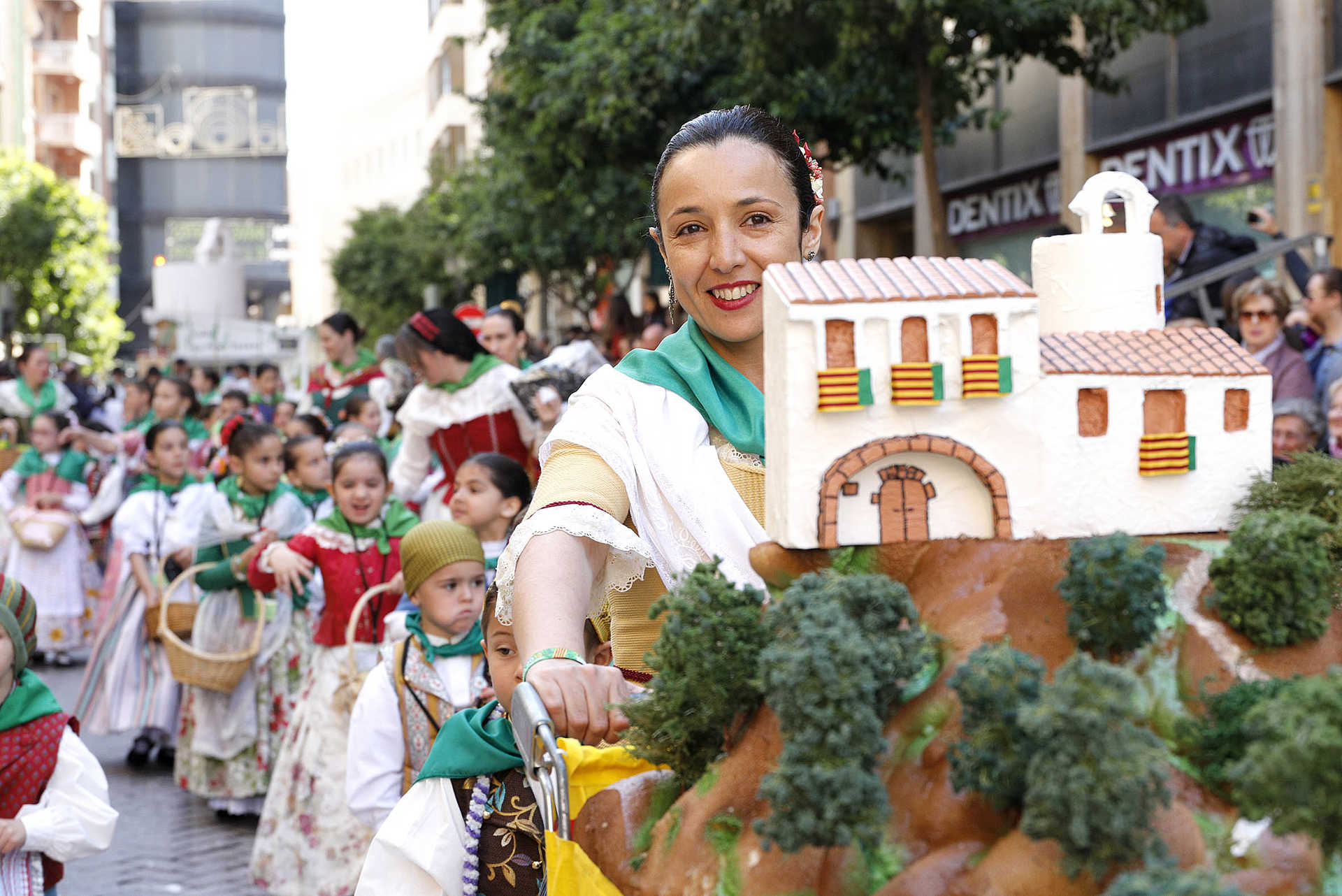
A Glimpse into the Origins
The Fiestas de la Magdalena commemorate the origins of Castellón de la Plana, harking back to the 13th century when the settlement was relocated from the mountainous area to the fertile plains. Over the course of nine days, the city is transformed into a bustling hub of festivity, with events that illuminate its streets and engage both locals and visitors in a celebration of its storied past.
The Inaugural Act: El Pregó
The festivities kick off with the traditional procession known as "El Pregó". This opening ceremony is a vibrant and colourful parade that heralds the start of the celebrations. The Pregó is an announcement that the city is ready to embark on days filled with joy, tradition, and community spirit. It sets the tone for what is to follow and instils a deep sense of anticipation among attendees.
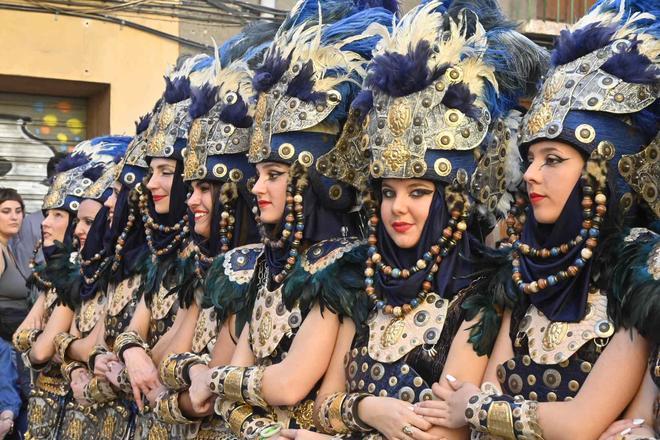
The Romeria: A Pilgrimage of Canyes
One of the most significant and heartfelt events of the Fiestas de la Magdalena is the "Romeria de les Canyes". During this pilgrimage, thousands of participants make their way to the ermita (hermitage) of La Magdalena. Carrying canes adorned with green ribbons, they embark on a journey that symbolises the original movement of the city from the mountains to its present location. This act of remembrance is both poignant and celebratory, drawing individuals of all ages to partake in this collective homage to the city's founders.
The Gaiates Parade: A Dazzling Display
Another highlight of the festivities is the "Desfile de Gaiates". This parade features intricately decorated and illuminated monuments known as Gaiates. These structures are symbolic of the lanterns that guided the settlers during their night-time journey to the plains. The spectacular display of lights as the Gaiates move through the streets is a sight to behold, captivating audiences with their beauty and historical significance.
Floral Tributes and Fireworks
The festival also includes a touching floral offering to the "Mare de Déu del Lledó". Thousands of Castellonenses, dressed in traditional attire, participate in this event, showcasing the city's rich cultural heritage and devout spirit. The floral tribute is a colourful and fragrant manifestation of the city's collective devotion and reverence.
The "Enfarol del Fadrí" is another anticipated event, where the Fadrí bell tower in the Plaza Mayor is illuminated with a stunning display of fireworks. This night-time spectacle transforms the city's skyline into a glittering canvas and is a favourite amongst both the local population and tourists alike.
A Symphony of Events: Music, Food, and Tradition
Throughout the Fiestas de la Magdalena, the streets of Castellón de la Plana come alive with a plethora of activities. Concerts, fireworks (or "mascletás"), gastronomic tastings, and street performances fill the schedule, ensuring that there is something for everyone. The city's culinary traditions are on full display, offering visitors a chance to indulge in local delicacies and traditional dishes that are integral to the festival experience.
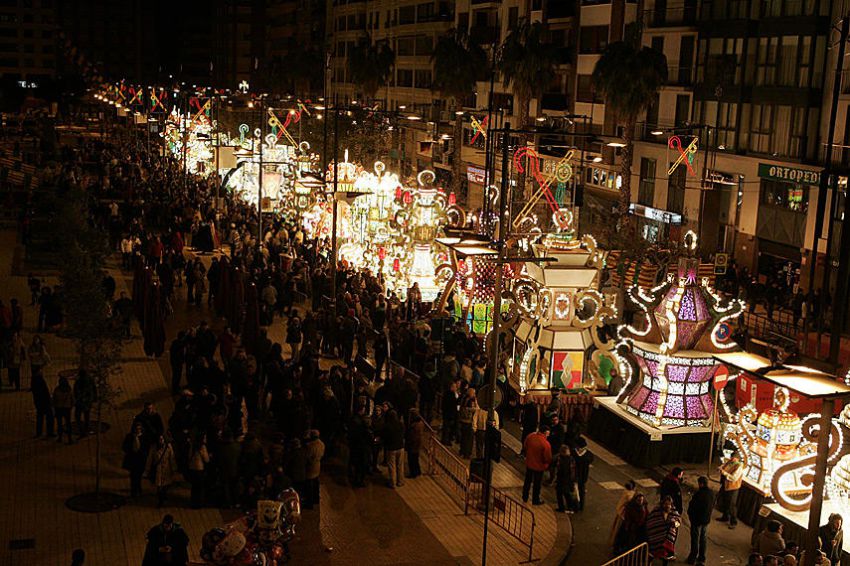
The Grandeur of Community Spirit
The Fiestas de la Magdalena are not merely about grand events; they are about the community. The participation of the locals in every aspect of the festival highlights the collective spirit and pride of the city. From the vibrantly dressed participants of the floral offering to the families enjoying the fireworks, the community's involvement is what makes this festival truly special.
Concluding the Festivities
The festival concludes in the grandest of fashions on the final Sunday at midnight in front of the Ayuntamiento (Town Hall). The event, capped off by the collective shout of "Magdalena Vitol!", serves as a fitting closure to a week of extensive celebrations. This cry is a signal that the festivities have come to an end, but it also serves as a promise for the vibrant return of the festival the following year.
Practical Information for Visitors
If you are planning to experience the Fiestas de la Magdalena, here are a few practical pieces of information to keep in mind:
-
Location: The festival takes place in Castellón de la Plana.
-
Dates: The 2025 celebration runs from 22nd March to 30th March.
-
Contact Information: Patronato Municipal de Turismo de Castellón can be reached at informadorturistico@castellonturismo.es or at +34 964 06 93 33.
-
Official Website: https://fiestasdelamagdalena.com provides more details and updates about the festival.
The Fiestas de la Magdalena in Castellón de la Plana are a profound celebration of history, culture, and community spirit. With its varied and vibrant events, the festival offers an enriching experience that connects the past with the present. Whether you are a history enthusiast, a lover of cultural events, or simply looking to immerse yourself in a joyous celebration, the Fiestas de la Magdalena promise an unforgettable experience. Join the thousands who flock to this city each year and become a part of a tradition that has been cherished for centuries.
 3
Like
Published at 2:10 AM Comments (0)
3
Like
Published at 2:10 AM Comments (0)
Experience the Magic of Las Fallas in Valencia 2025
Friday, February 28, 2025
Valencia’s renowned Las Fallas festival is a unique cultural experience that should be on everyone's bucket list. Celebrated from the 1st to the 19th of March, Las Fallas transforms the city into a vibrant spectacle of artistry, tradition, and sheer excitement, culminating in a spectacular burning ritual from the 15th to the 19th. Let's explore what makes this festival so extraordinary, from its historical origins to its modern-day celebrations.
A Historical Celebration of Spring
The origins of Las Fallas can be traced back to the Middle Ages. During this time, carpenters in Valencia would burn old wooden tools and scaffolding to mark the end of winter and the coming of spring. These humble beginnings gradually evolved into a more elaborate celebration, where wooden sculptures, known as "fallas," were crafted and set alight. What started as a simple bonfire took on more creative and satirical forms, eventually becoming the grand festival we know today.
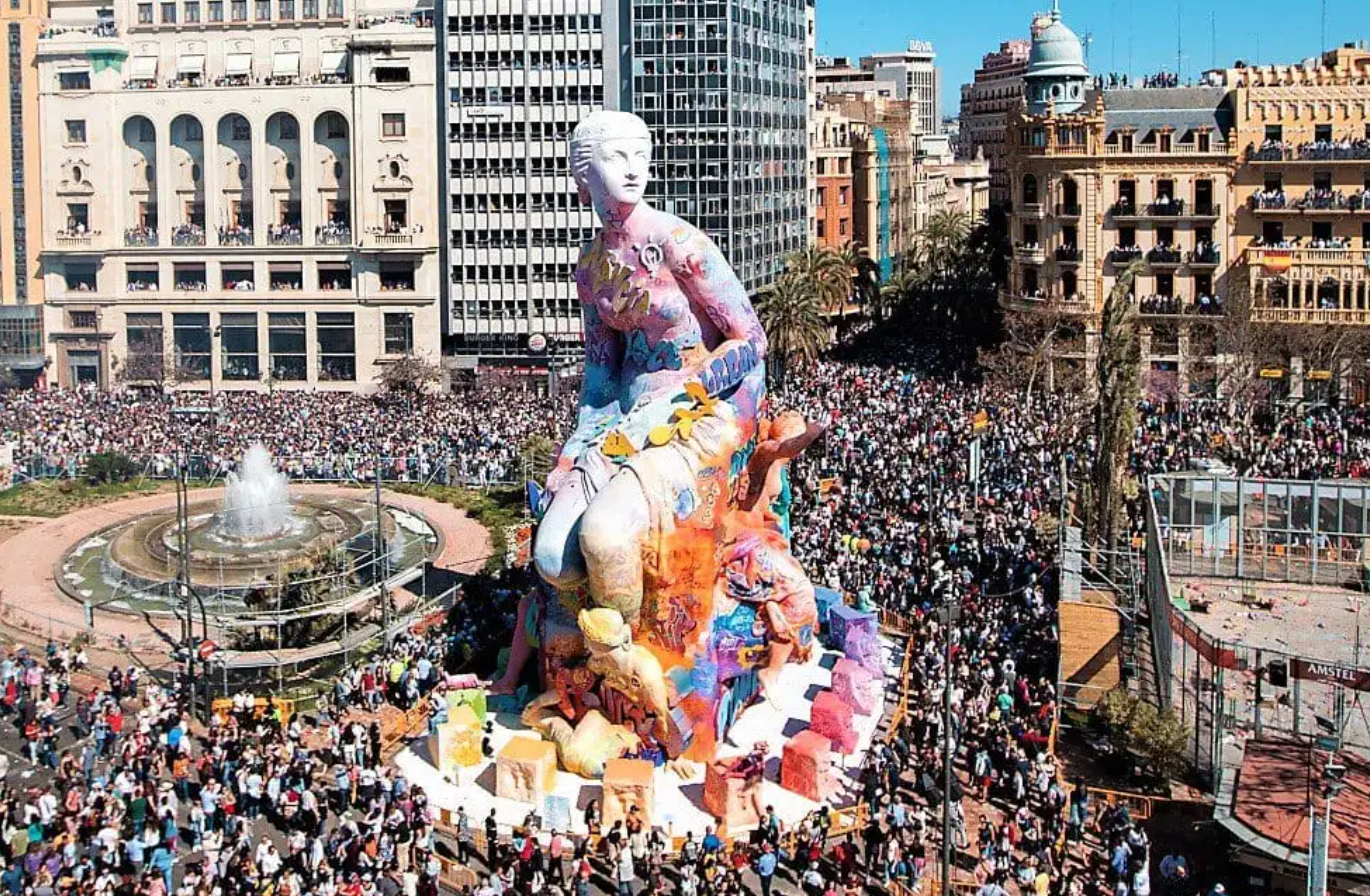
Timeless Traditions and Spectacular Events
Las Fallas has grown into one of Spain’s most visually stunning cultural events, drawing visitors from around the globe. The festival's centrepiece is the creation and display of over 800 intricate sculptures, called "ninots," made from materials such as wood, cardboard, and papier-mâché. These sculptures often depict satirical themes, offering commentary on political and social issues, thus transforming Valencia into a temporary, open-air museum.
The entire city buzzes with activity during Las Fallas. Daily events include vibrant parades, enthralling firework displays, concerts, and traditional dances, each contributing to the festival’s electrifying atmosphere.
One particularly thrilling tradition is the daily "Mascletà." Held at midday in the Plaza del Ayuntamiento, this rhythmic and deafening fireworks display is a highlight for both locals and visitors. The Mascletà is not just a feast for the eyes but an experience that thunders through your very core, connecting everyone in shared excitement.
The Grand Finale: La Cremà
The climax of Las Fallas occurs on the 19th of March, a day known as "La Cremà." This is when the festival reaches its incredible conclusion by setting the fallas sculptures ablaze in enormous bonfires. La Cremà symbolises renewal and the arrival of spring, and the spectacle is both awe-inspiring and moving. The fallas infantiles (children’s sculptures) are burned earlier in the evening, while the main monuments go up in flames later at night, with the final fire traditionally consuming the falla in the Plaza del Ayuntamiento.
Each year, one ninot is saved from the flames through a public vote. This fortunate sculpture, known as the "ninot indultat," is preserved in the Fallas Museum, serving as a charming remnant of the festival long after the fires have died down.

The Cultural Significance of Las Fallas
Las Fallas is far more than a festive celebration; it is a vivid expression of Valencia’s cultural identity, history, and community spirit. The festival honours Saint Joseph, the patron saint of carpenters, linking it deeply to the city’s historical roots. Through the meticulously crafted fallas, the festival showcases the incredible artistic talent and creativity that thrives in Valencia.
The burning of the fallas, or "la cremà," marks a new beginning, symbolising the city’s readiness to embrace a fresh cycle of growth and renewal. This act of transformation is a powerful reminder of the cyclical nature of life and the promise of new opportunities.
Moreover, Las Fallas plays a crucial role in boosting tourism and the local economy. By attracting thousands of visitors, the festival helps to showcase Valencia’s rich heritage and vibrant culture on a global stage.
Traditional Attire and Culinary Delights
During Las Fallas, many locals and participants dress in traditional Valencian attire, adding to the festival’s rich, colourful tapestry. Women often don intricately embroidered dresses made from exquisite silk, accompanied by elaborate hairstyles adorned with decorative combs known as "peinetas." Men wear historic costumes such as waistcoats, sashes, and embroidered jackets.
While traditional attire is a common sight at official events, such as the Ofrenda de Flores (a floral offering to the Virgin Mary), most visitors opt for casual attire, sometimes adding themed accessories to join in the festive spirit.
The festival is also a time for indulging in local culinary delights. A popular treat during Las Fallas is "buñuelos de calabaza," which are sweet, pumpkin-flavoured doughnuts often served with hot chocolate. Another favourite is "horchata," a creamy drink made from tiger nuts, which is both refreshing and delicious.
Valencia: A City of Art and Science
Valencia, the third-largest city in Spain after Madrid and Barcelona, offers more than just its famous festival. Located on the Mediterranean coast, Valencia boasts a mix of historical landmarks and modern attractions. The City of Arts and Sciences is a must-see. This modern architectural complex includes museums, an opera house, and the Oceanarium sea life centre.
Other notable sites include the stunning Valencia Cathedral, the Miguelete tower, the Torres de Serranos, and the Torres de Quart. The Lonja de la Seda, a UNESCO World Heritage site, is another gem, showcasing the city’s historical significance as a centre of commerce and culture.
Looking Forward: Fallas 2026
While the main festival takes place from 15th to 19th March, preparations and some festivities for Fallas often begin earlier and can extend beyond the official dates. As 2025 promises an unforgettable experience, planning ahead for the next year’s celebrations might be a wise choice for those eager to immerse themselves in Valencia's traditions.
Whether you’re a first-time visitor or a seasoned festival-goer, Las Fallas offers an unforgettable mix of culture, art, and community spirit. It’s a celebration that not only honours the past but also embraces the future with open arms, ensuring that Valencia remains a city vibrant with life and creativity.
If Valencia's Fallas festival has piqued your interest, now is the perfect time to plan your trip and experience this remarkable event firsthand. Enjoy the explosion of colour, creativity, and tradition that makes Las Fallas one of Spain’s most spectacular celebrations.
 0
Like
Published at 11:04 PM Comments (0)
0
Like
Published at 11:04 PM Comments (0)
10 Christmas Traditions Around Spain
Thursday, December 5, 2024
Christmas in Spain is a time of celebration, family gatherings, festive feasts, and rich traditions that vary from region to region. The Spanish Christmas season is vibrant with unique customs that reflect the country's diverse cultural heritage. Here are some of the most notable Christmas traditions across different parts of Spain, including the Basque Country.
1. Nochebuena (Christmas Eve)
Nochebuena, celebrated on December 24th, is arguably the most important night of the Christmas season in Spain. Families gather for a sumptuous dinner that often includes seafood, roast lamb or pig, and a variety of traditional desserts such as turrón (nougat) and polvorones (almond cookies). Dinner is followed by the "Misa del Gallo" (Midnight Mass), where communities come together to celebrate the birth of Jesus.
2. El Belén (Nativity Scene)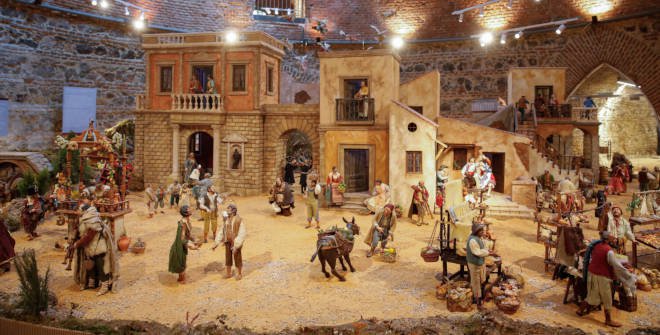
The Nativity scene, or "Belen," is a staple in Spanish households during Christmas. These intricate displays can range from small, simple setups to large, elaborate ones depicting the entire village of Bethlehem. The most famous Nativity scene is in Madrid's Plaza Mayor, where artisans from all over the country showcase their creations.
3. Caga Tió (The Pooping Log) in Catalonia
In Catalonia, a unique tradition known as "Caga Tió" involves a log adorned with a face and a red hat. Children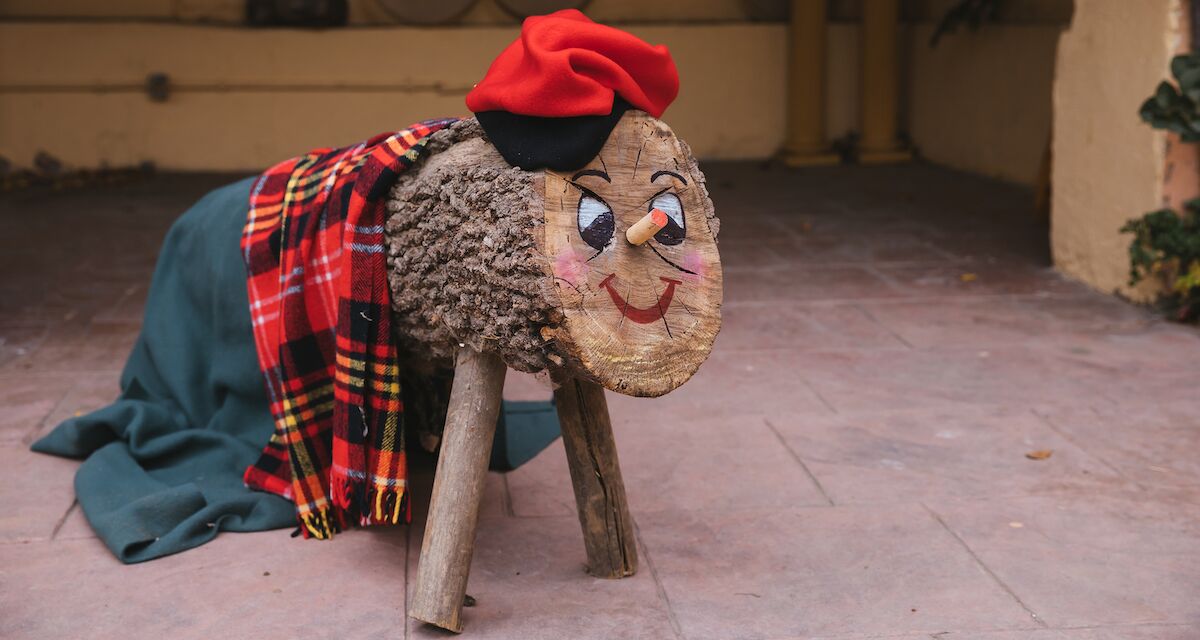 "feed" the log small treats in the days leading up to Christmas. On Christmas Eve, they beat the log with sticks while singing a special song, prompting it to "poop" out gifts and candies. "feed" the log small treats in the days leading up to Christmas. On Christmas Eve, they beat the log with sticks while singing a special song, prompting it to "poop" out gifts and candies.
4. Día de los Santos Inocentes
December 28th marks the "Día de los Santos Inocentes," Spain's equivalent of April Fool’s Day. People play pranks on each other, and the media often participates with humorous fake news stories. The day commemorates the biblical account of King Herod's order to kill male infants in Bethlehem.
5. Nochevieja (New Year's Eve)
New Year's Eve, or "Nochevieja," is celebrated with a festive atmosphere. A longstanding tradition is to eat 12 grapes at the stroke of midnight—one grape for each chime of the clock—believed to bring good luck for each month of the coming year. In cities like Madrid, people gather at main squares, such as Puerta del Sol, to celebrate this occasion.
6. Cabalgata de los Reyes Magos (Three Kings Parade)
 - Copy 1.jpeg)
On January 5th, the eve of Epiphany, Spain hosts the "Cabalgata de los Reyes Magos," a grand parade celebrating the arrival of the Three Wise Men. Elaborate floats and performers traverse through streets, distributing sweets and small gifts to the eager children who line the parade route. This tradition is especially grand in cities like Madrid, Barcelona, and Seville.
7. Día de los Reyes (Epiphany)
January 6th, known as "Día de los Reyes," is the day when Spanish children wake up to find gifts left by the Three Wise Men as opposed to Santa Claus. Families also enjoy the "Roscón de Reyes," a ring-shaped sweet bread decorated with candied fruits. Hidden inside the Roscón are small figurines and a bean—the one who finds the figurine is "king" or "queen" for the day, while the one who finds the bean must buy the Roscón next year.
8. Andalusia’s Zambombas
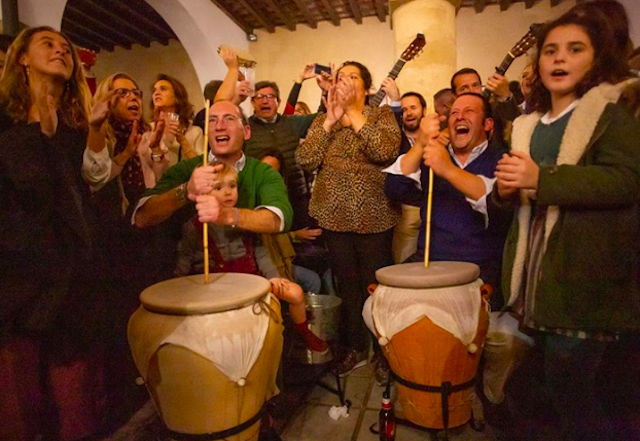
In the Andalusian region, "Zambombas" are festive gatherings that occur throughout December, blending traditional Christmas carols with flamenco music. Named after the zambomba, a percussion instrument, these events bring communities together in joyous sing-alongs and dances, creating a lively and communal atmosphere.
9. Olentzero in the Basque Country
In the Basque Country, Christmas is marked by the appearance of Olentzero, a legendary character who brings gifts to children on Christmas Eve. Olentzero is depicted as a coal miner or charcoal burner, often dressed in traditional Basque attire. Parades and festivities are held in his honor, and children leave out shoes to be filled with presents. Another popular Basque tradition is "Eguberri," which encompasses various Christmas celebrations and gatherings within the region.
10. La Tronca (The Log) in Aragon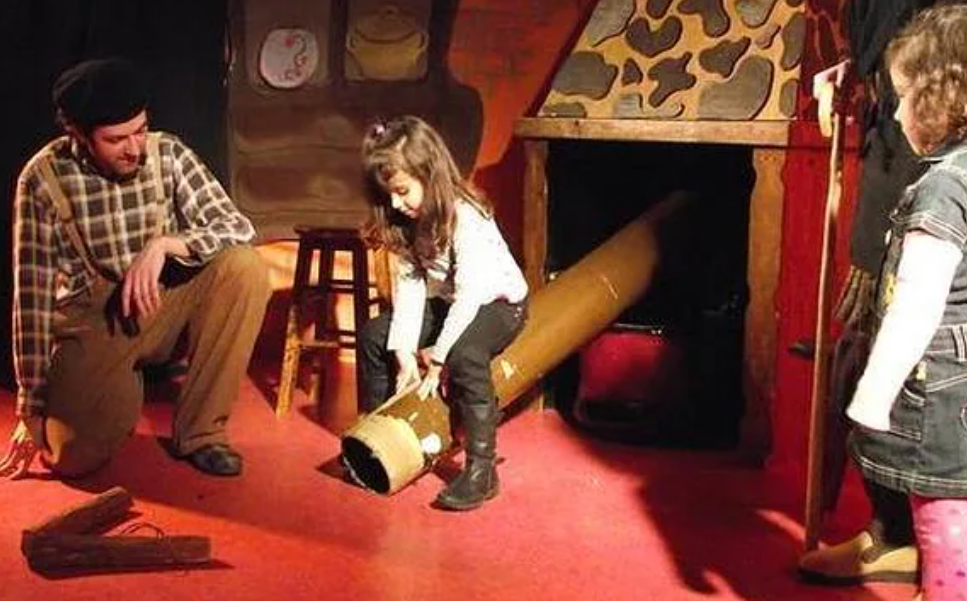
In the Aragon region, particularly in the province of Huesca, there is a tradition called "La Tronca" or "The Log." Similar to Catalonia's Caga Tió, La Tronca involves a hollowed-out log that children fill with candies, fruits, and small toys throughout the Advent season. On Christmas Eve, the log is set on fire, and as it burns, the children sing traditional songs asking for gifts. Afterward, the ashes from the log are collected and kept as a good luck charm for the New Year.
The magic of Spanish Christmas traditions is in their ability to unite communities, preserve cultural heritage, and spread joy. From the whimsical Caga Tió of Catalonia to the grand Cabalgata de los Reyes Magos, and from Andalusia's Zambombas to the Basque Country's Olentzero, each region of Spain offers its unique take on the festive season. These customs reflect the warmth, creativity, and rich history that make Christmas in Spain a truly special time.
 0
Like
Published at 10:38 AM Comments (0)
0
Like
Published at 10:38 AM Comments (0)
The Splendor of Seville's Feria de Abril
Friday, April 12, 2024
Seville, a city renowned for its vibrant culture and rich history, is home to one of Spain's most anticipated annual events - the Feria de Abril. As we look forward to the 2024 festivities, let's explore the essence of this week-long celebration that transforms Seville into a spectacle of colour, tradition, and joyous revelry.
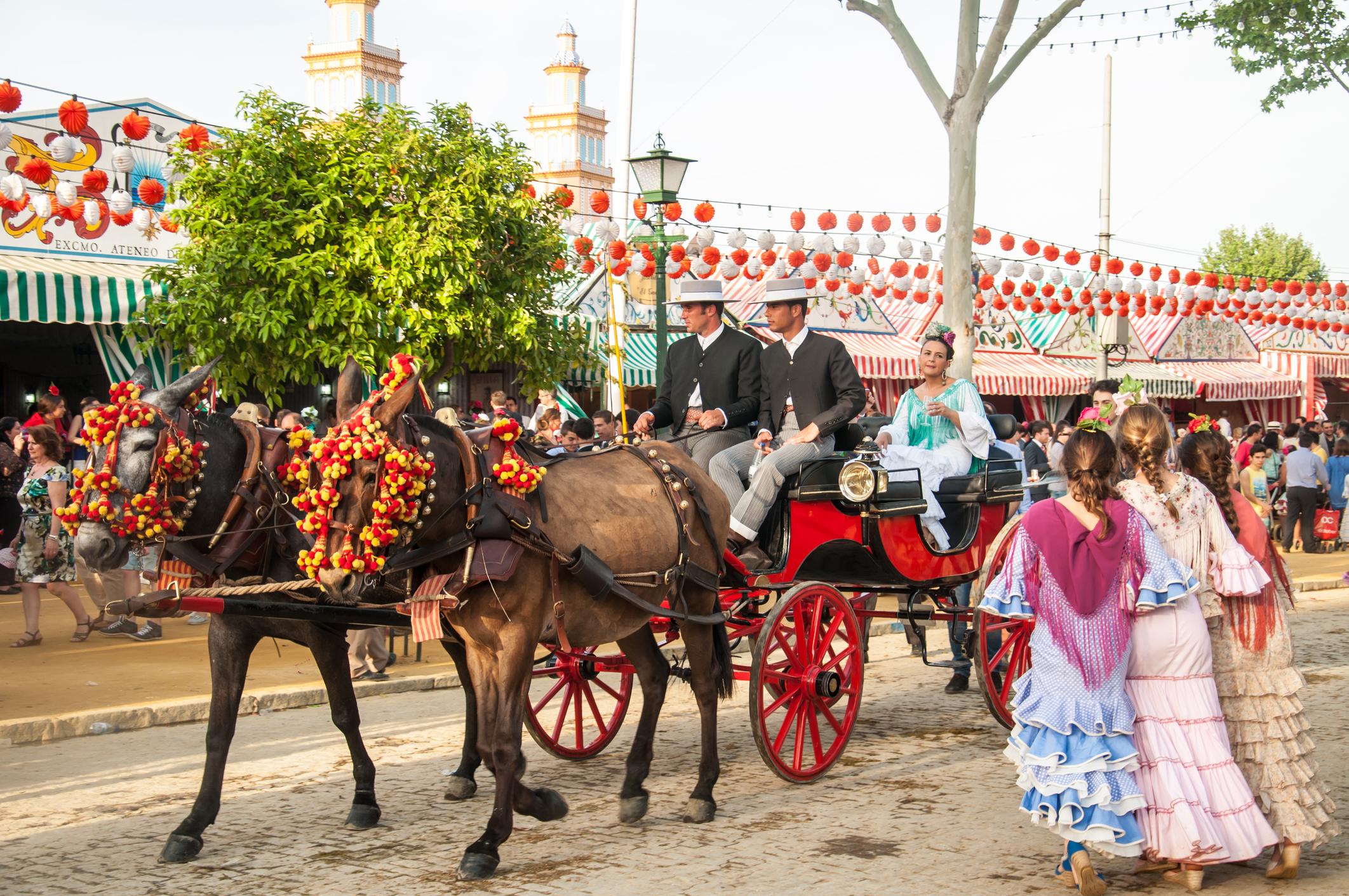
Unveiling the Feria de Abril: Dates and Venue
Scheduled from April 14th to 20th, 2024, the Feria de Abril invites locals and visitors to immerse themselves in the festivities at the Real de la Feria, in Seville's Los Remedios district. This fairground becomes the heart of the celebration, marked by the delightful sense of anticipation and the shared experiences that await.
A Tapestry of Tradition and Celebration
Originating in 1846 as a modest cattle fair, the Feria de Abril has gracefully evolved into one of the world's most recognized international festivals. This transformation reflects Seville's capacity to marry tradition with contemporary charm, offering a rich tapestry of cultural experiences that appeal to all ages.
At the core of the festival are the "casetas" - vibrant marquee tents where families, businesses, and organizations host guests with open arms. These spaces come alive with the rhythms of flamenco, the chatter of joyous reunions, and the flavours of Sevillian cuisine.
Gastronomy and Revelry
One does not simply attend the Feria de Abril without indulging in its culinary delights. From the tender calamares with salsa aioli to the refreshing sips of local sherry, every bite and drink is a testament to Andalusian gastronomy. As the night deepens, the sounds of festive music invite attendees to dance until dawn, celebrating the enduring spirit of Seville.
Cultural Immersion
The festival's opening ceremony, known as the "prueba del alumbrao," marvels with the ceremonial lighting of the fairgrounds, setting the stage for a week where tradition takes the forefront. It's a spectacle where men don the "traje corto," and women dazzle in flamenco dresses, embodying the beauty of Andalusian heritage.
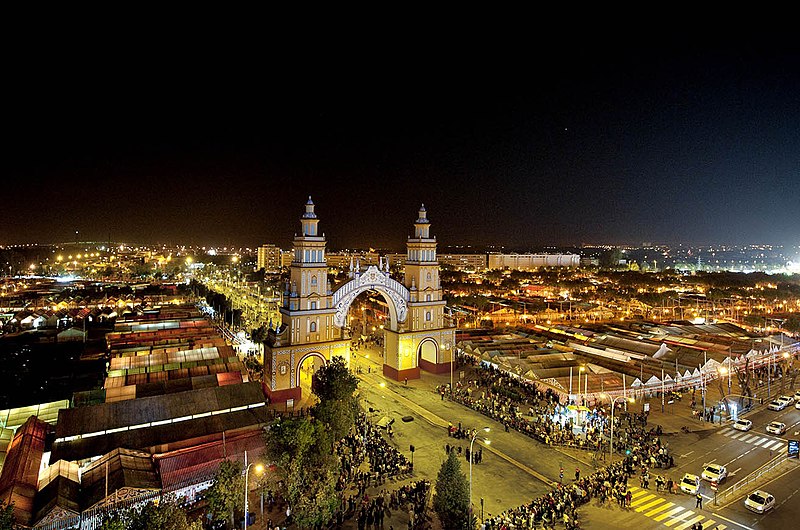
Why the Feria de Abril Captures Hearts
Beyond the vivid displays and sensory delights, the Feria de Abril resonates because it epitomizes the communal spirit of Seville. It's a time when the city's tapestry of neighbourhoods, from La Macarena to Triana, unites in celebration. It's an invitation to experience Seville's historical riches, from the Giralda to the Alcázar, amidst the festivities.
A Global Celebration
The Feria de Abril extends its embrace far beyond Seville, attracting international visitors and expatriate communities eager to partake in this unique cultural phenomenon. It’s a festivity that transcends borders, connecting diverse cultures through the universal language of festivity.
Embrace the Festivity
As the Feria de Abril 2024 approaches, Seville prepares to don its festive attire once more, promising an unforgettable experience. Whether you're drawn by the allure of traditional dances, the gastronomic adventure, or the simple joy of shared moments, the Feria de Abril offers an enchanting snapshot of Andalusian culture at its finest.
Prepare to be captivated by the enchantment of Seville's Feria de Abril, where every corner of this historic city comes alive with the echoes of celebration, tradition, and unparalleled joy.
 1
Like
Published at 9:19 PM Comments (0)
1
Like
Published at 9:19 PM Comments (0)
The Capirote: The Fascinating Journey into the Heart of Spanish Easter Traditions
Friday, March 29, 2024
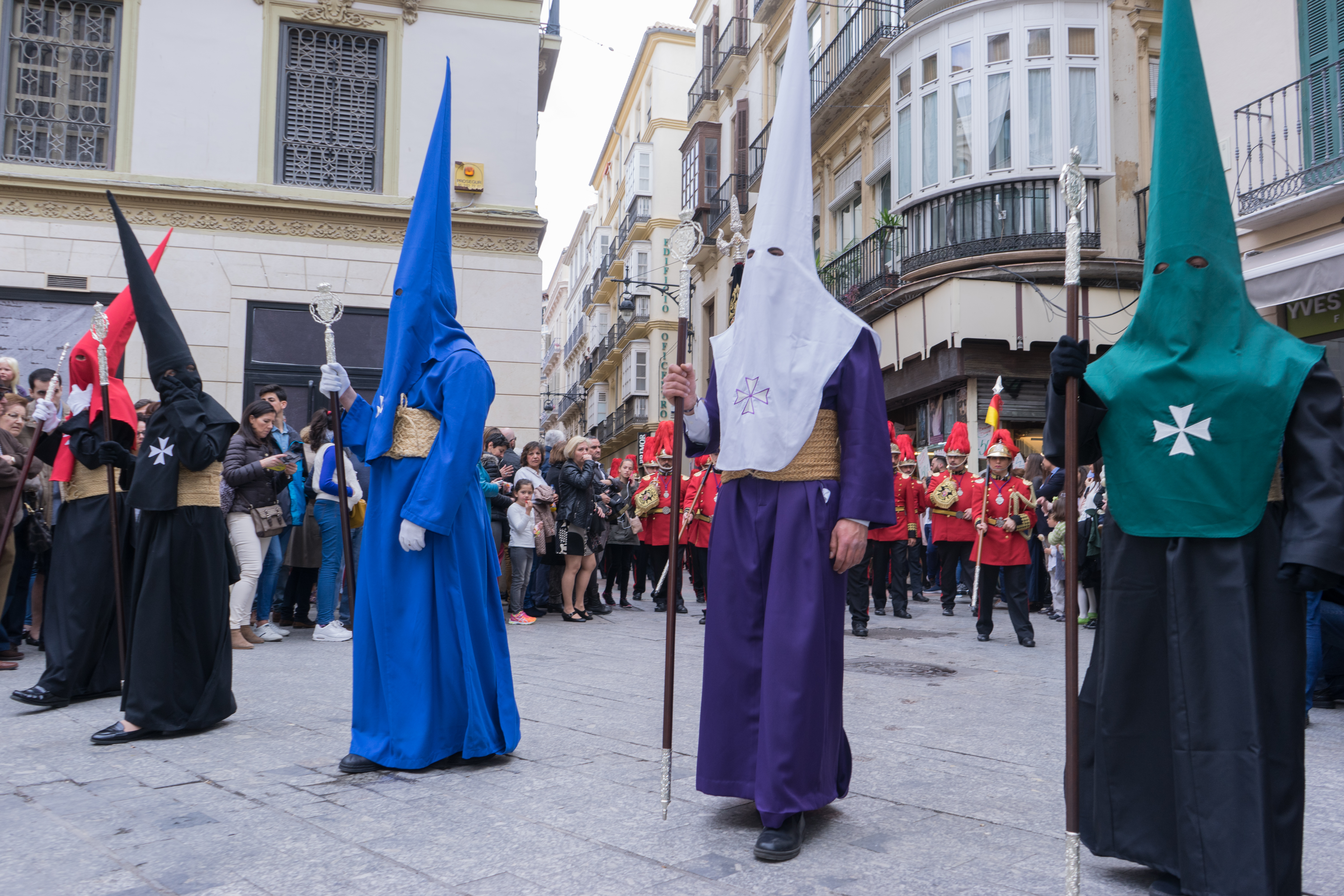
Easter, a cherished Christian holiday celebrated worldwide, holds a special place in the hearts of the Spanish people. Spain, known for its vibrant celebrations and rich cultural heritage, boasts unique traditions that make Easter an extraordinary event. Among these customs, the Capirote, a distinctive cone-shaped hat, has become an iconic symbol of Spanish Easter processions.
Ancient Origins:
To understand the Capirote's journey, we must delve into its ancient origins. The practice of wearing distinctive headgear dates back to ancient civilizations, symbolizing various cultural and religious beliefs. This tradition was common among the Phoenicians, Romans, and Greeks, who used head coverings to demonstrate allegiance to specific deities during religious ceremonies.
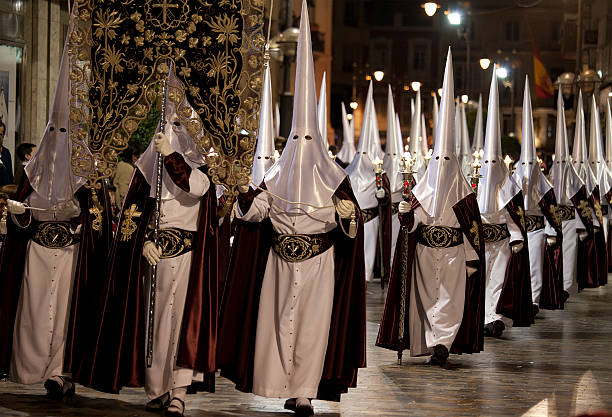
Medieval Spain:
The Capirote's presence in Spanish Easter traditions can be traced back to medieval times. During this period, Catholic rituals merged with pre-existing cultural practices, resulting in the incorporation of distinctive attire during religious processions. The Capirote, originating from the Latin "cappa" (meaning cape), gradually took shape.
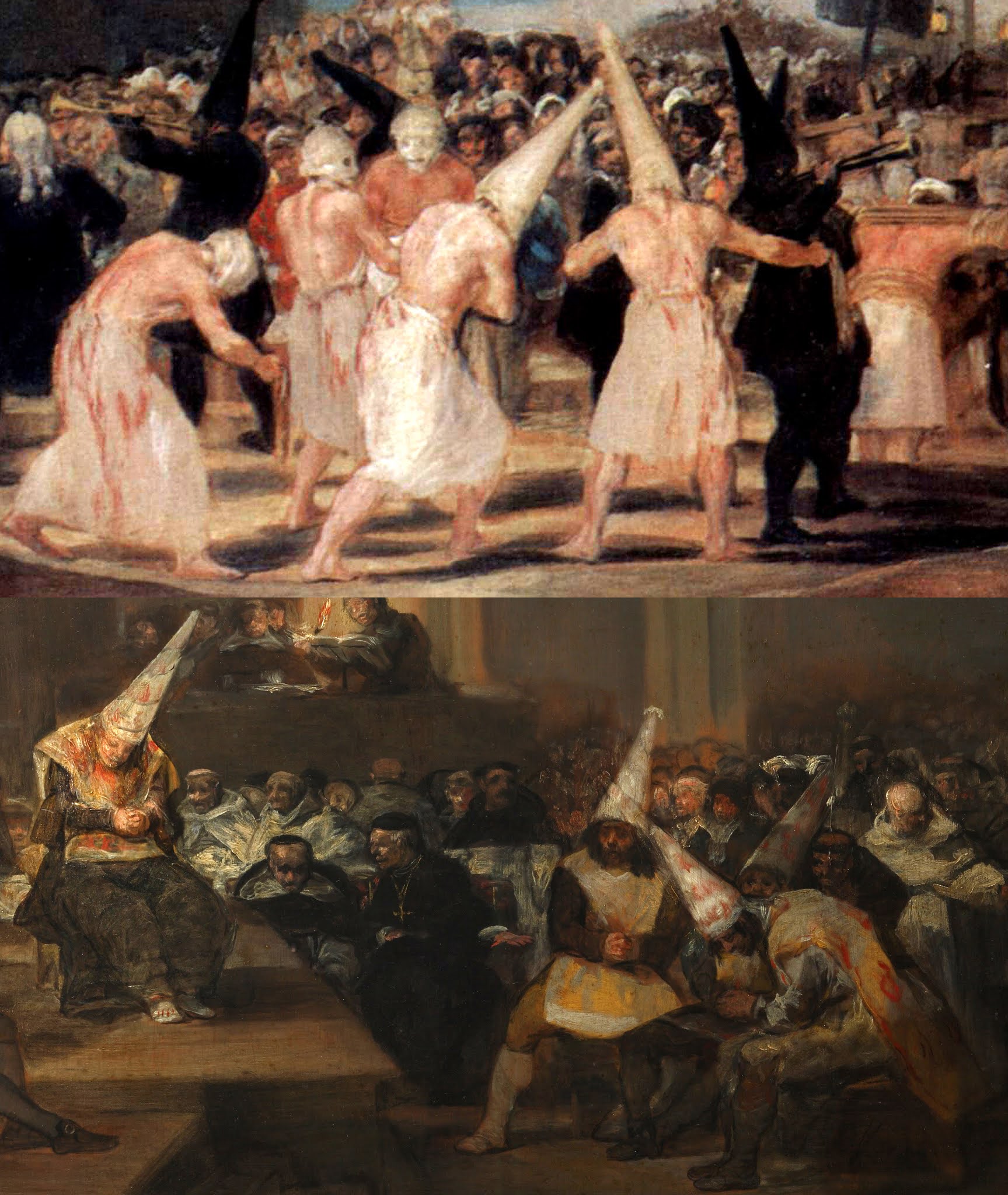
The Capa Parda and the Nazareno Robe:
In medieval Spain, penitents, also known as disciplinants, sought to publicly express their piety and repentance during Holy Week. They wore a long, dark robe, called the Capa Parda, and a similar conical headdress, which today would resemble the Capirote. Over time, the penitents specialized in various brotherhoods, each with its own distinctive robe and Capirote shape and colour.
Evolution of the Capirote:
Throughout the centuries, the design and symbolism of the Capirote evolved. Originally, it was a simple cone-shaped hat worn in combination with the Penitent's robe. However, as the Easter processions continued to grow in size and importance, the Capirote took on new forms. Members of different brotherhoods began to use variations in shape, height, and colour to distinguish themselves, representing their individual devotions and religious symbolism.
Religious Symbolism:
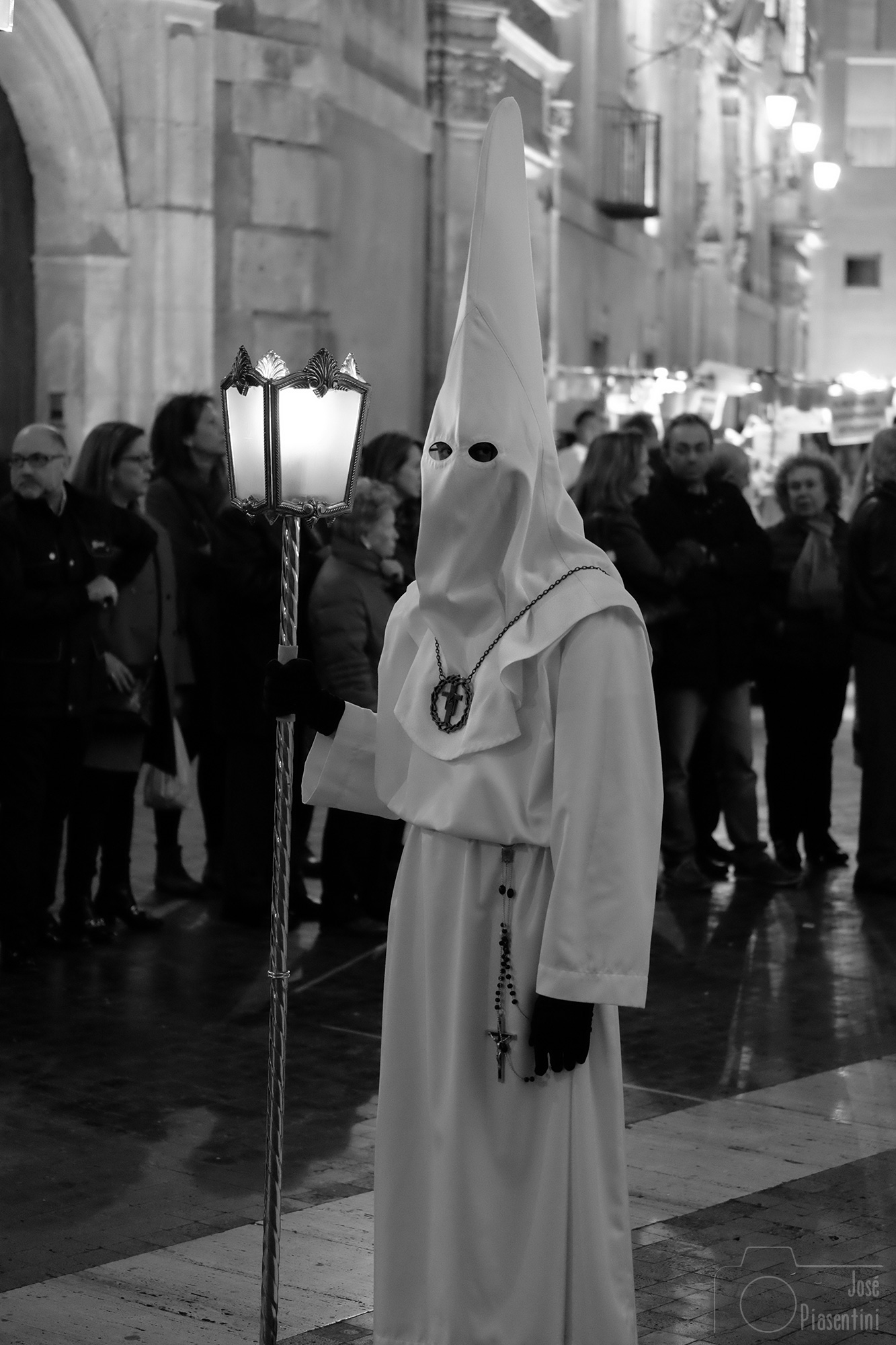 The Capirote's colours hold great significance in Spanish Easter traditions. The primary colours, white and black, represent purity and penance, respectively. They are often seen in combination with other hues, ranging from deep red to purple, signifying additional religious themes such as martyrdom or the sacrifice of Christ. The Capirote's colours hold great significance in Spanish Easter traditions. The primary colours, white and black, represent purity and penance, respectively. They are often seen in combination with other hues, ranging from deep red to purple, signifying additional religious themes such as martyrdom or the sacrifice of Christ.
Controversies and Cultural Significance:
While the Capirote is an integral part of Spanish Easter traditions, it has sometimes faced controversy. Critics argue that the garment's cone-shaped design bears an unfortunate resemblance to the Ku Klux Klan's head covering. However, it is essential to recognize that the Capirote predates the Klan's existence and has a distinct historical and cultural context within Spanish society.
The Capirote is deeply ingrained in Spanish culture, symbolizing tradition, faith, and community. It represents the devotion of individuals who devote themselves to religious processions and seek spiritual contemplation during Holy Week.
The Capirote's presence in Spanish Easter traditions reflects a remarkable journey through time. Rooted in ancient practices and evolving throughout centuries, it has become an iconic symbol of devotion and cultural identity. Despite occasional controversies, the Capirote remains an integral part of Spain's Easter celebrations, bridging the gap between past and present and highlighting the nation's deep religious roots. As Holy Week approaches each year, the Capirote continues to unite communities and inspire the faithful, reminding us of the enduring power of tradition and the importance of expressing one's faith.
 0
Like
Published at 10:45 AM Comments (0)
0
Like
Published at 10:45 AM Comments (0)
Spam post or Abuse? Please let us know
|
|